Every Saturday thousands of people from all over the world visit the Otavalo market. Not only foreigners that come as tourists, but also many Ecuadorians. Local people, as well as many inhabitants from the nearby capital Quito.
The main reason: Otavalo houses one of the largest indigenous markets in Latin-America. A must see for many.
Most people come to buy souvenirs & gifts. The beautiful handicrafts the Otavalos produce & sell for sharp prices. But there’s much more to it, as I shall explain to you in this post.
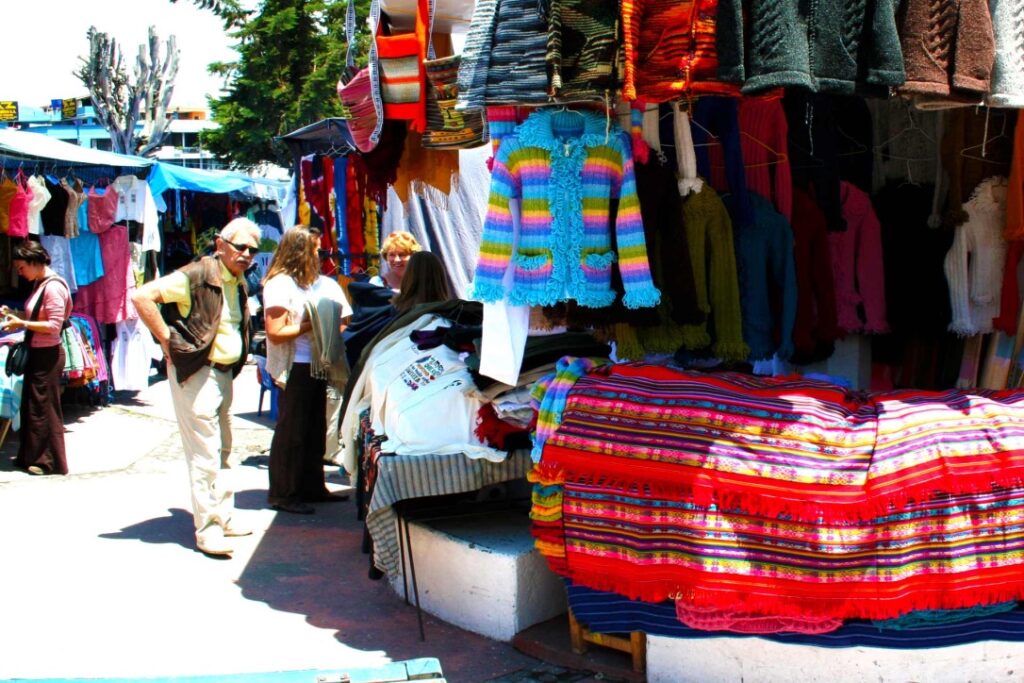
Because the Saturday market is so large and visited by so many people, it can be a bit overwhelming. Through the years it has grown & grown. Not only occupying the central area, but also many streets & plazas around. In a few words, many sellers, lots of stuff for sale and multitudes of visitors.
For that reason, I start this post with some useful information. Things you should know before your visit the Otavalo market yourself.
- Note: Most travelers, planning a tour of the country, first head out to Otavalo. However, because they think the airport is near to Quito, they spend the first night in the capital. While, depending on your plans, in time & money it’s better to go directly to Otavalo from the airport. This way, gaining a day and avoiding a busy city. If you like the idea, at our Hotel we can arrange a taxi with our own trustworthy & friendly driver Don Luis for just $55.
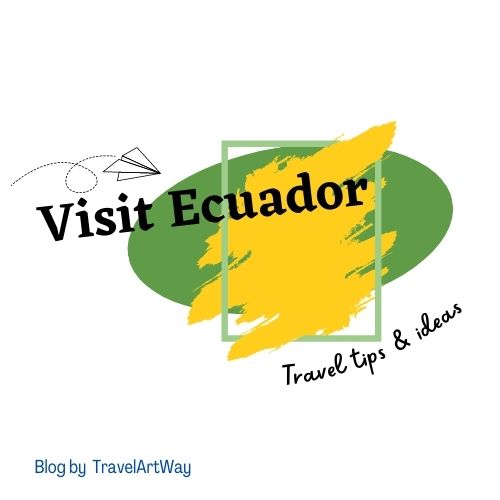
Introduction to your visit to the Otavalo market
- First of all: In Otavalo every day is market day. Saturday is the main market day, but every other weekday the handicrafts stalls are set up on the Plaza de Ponchos. Besides that, permanent handicraft stores open daily all over town. In short, you can purchase gifts & souvenirs every day of the week.
- Secondly: At a first glance it may look as if all sellers offer the same stuff. It’s absolutely true that many “handicrafts” are produced en masse these days. However, that doesn’t mean you can’t find authentic handmade items for sale yet. The challenge is to take your time and discover them. You have all day! Sellers set up their stall before the sun comes up and break them up when the sun goes down.
- Thirdly, and related to the second point made: You should know that when you visit the Otavalo market you actually step through history. A long history in which the indigenous people of the surrounding villages come to town to sell their homemade wares.
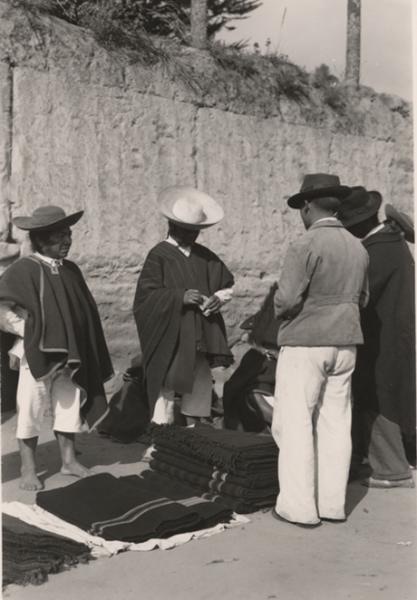
- Note: All Black & White photos are taken from the interesting book “The Awakening Valley“, written by John Collier, Jr. & Aníbal Buitrón, 1949.
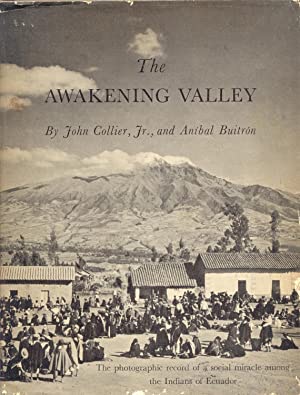
The main goal of this post is to introduce you to this long Otavalo market history. As well as tell & show you what’s left of it today.
A long history
Before the mid 15th century Inca-invasion of the country, the Andean region of what is today called Ecuador, consisted mainly of isolated mountain villages. One of them inhabited by a people called the Otavalos.
- Note: Click on the following link if you want to know exactly How Ecuador got it’s name?
Although the Otavalos generally maintained good relations with their neighbours (like the Cayambis and Caranquis), they always guarded their own identity.
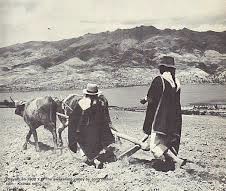
Two invasions in a row: Inca & Spanish
The invading Incas, coming from the South, were the first to break the isolation of these communities. Soon thereafter – in the first half of the 16th century – followed by the Spaniards, who conquered the area. (In both cases after fierce resistance).
As a consequence the lives of the communities changed drastically. Institutionalized as they were in larger empires, with their own laws & rules. Under the Incas the conquered peoples still enjoyed a certain freedom. While the Spaniards enslaved them on their haciendas.
- Originally the main settlement of the Otavalos was located on the shores of the nearby lake of San Pablo.
- After the conquest the Spanish moved them to the actual location. Fusing into an earlier settlement there, called Sarance.
- With the resettlement the place was renamed San Luis de Otavalo. Its official name today.
Although politically & economically things changed forever, socially the indigenous inhabitants tried to hold on to their own culture. Some customs & traditions they lost, others they kept.
- An example: Instead of holding on to their own language the Otavalos and most other indigenous people of Ecuador nowadays speak the Inca-language Quichua and/or Spanish.
- That said, in both languages there are slight differences through the whole area, as well as between countries (Ecuador/Peru/Bolivia). Almost like dialects.
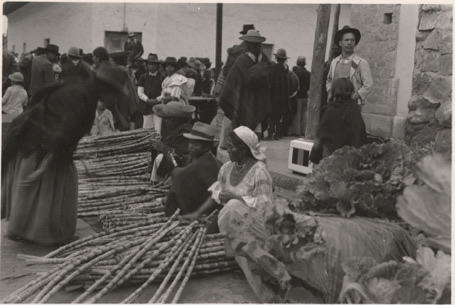
Hard fought independence
Through it all, the Otavalos always tried to preserve a certain independence. Not only socially, but also politically & economically. Somehow, through the years, they managed better than other indigenous peoples to do that.
Besides being peasants, they always showed themselves an enterprising people. Working the lands of the colonizers & their own small parcels around the house. But also producing handmade quality wares in their spare time.
Foremost as weavers. Weavers of ponchos & blankets. A profession that initially only produced wares for an internal indigenous market. Soon though, because of the high quality, the Otavalo weavers were asked by the mestizos & white inhabitants to make textile products for them as well. Cloth, but later on also garments like cloaks & sweaters, scarves & shawls.
That’s how the Otavalos learned how to make money & earn something extra. Selling quality products on market places like Otavalo & later on elsewhere. (Worldwide nowadays).
As a result the Otavalos were the first indigenous people who succeeded to come down from the higher Andes slopes, where the Spaniards had left them, to the Valley of the Awakening. Buying up land formerly owned by the white men. And in the end – the last half century – even buying terrains & houses in the town center. (Initially mainly around the Plaza de Ponchos).
- Note: In 2000 the inhabitants of Otavalo chose Mario Conejo as their first indigenous mayor. He wasn’t the first one in the country, but still another example of how the Otavalos broke loose from a marginalized past.
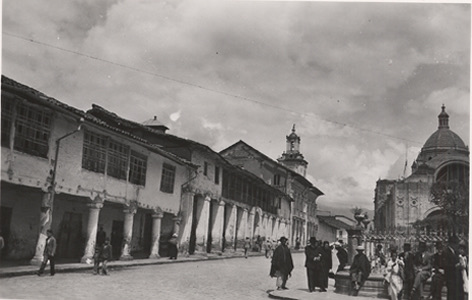
In comparison with many other indigenous groups most Otavalos are proud of their economic independence. And proud of their cultural heritage. Most of them still wear their beautiful traditional costumes with pride. (Mostly women, but also a considerable part of the men, young & old).
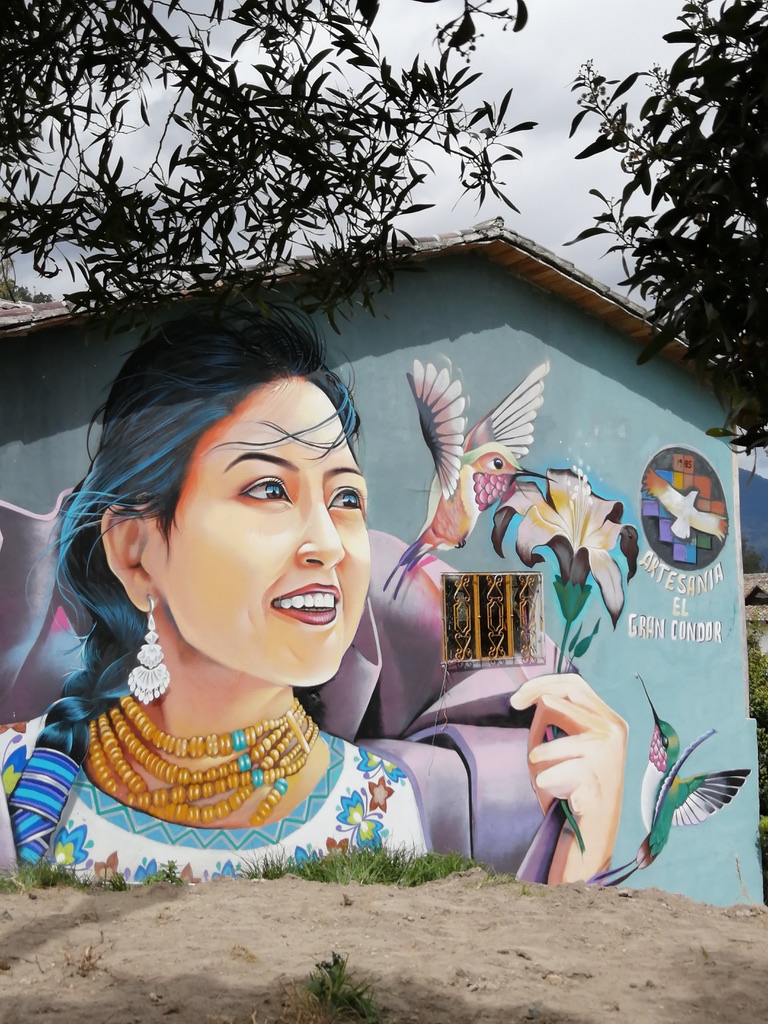
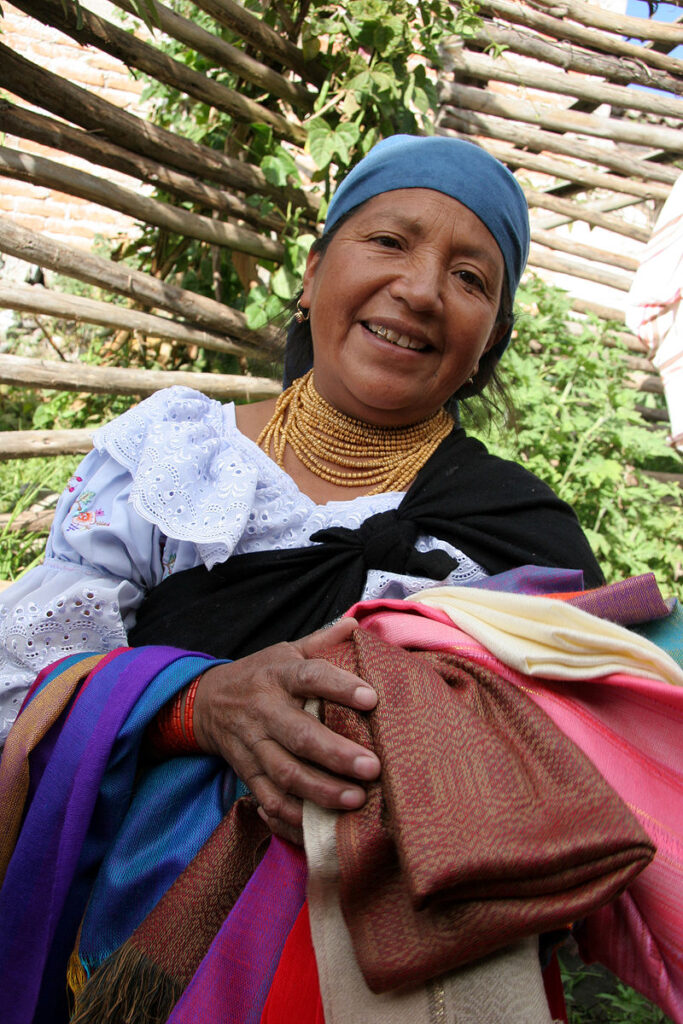
The market today
As in earlier days, in Otavalo there are four main market places to visit. Besides the Tourist market, there are special areas for local products.
- The Tourist market is a daily market concentrated around the Plaza de Ponchos. On Saturday it branches out through the whole city center.
- Besides this world famous handicraft market, there are different areas where they sell food stuffs. The main one is a modern market hall that was opened just a few years ago. Besides vegetables, fruits, spices, meat & fish on this market you’ll find flowers, utensils for everyday use & many others items.
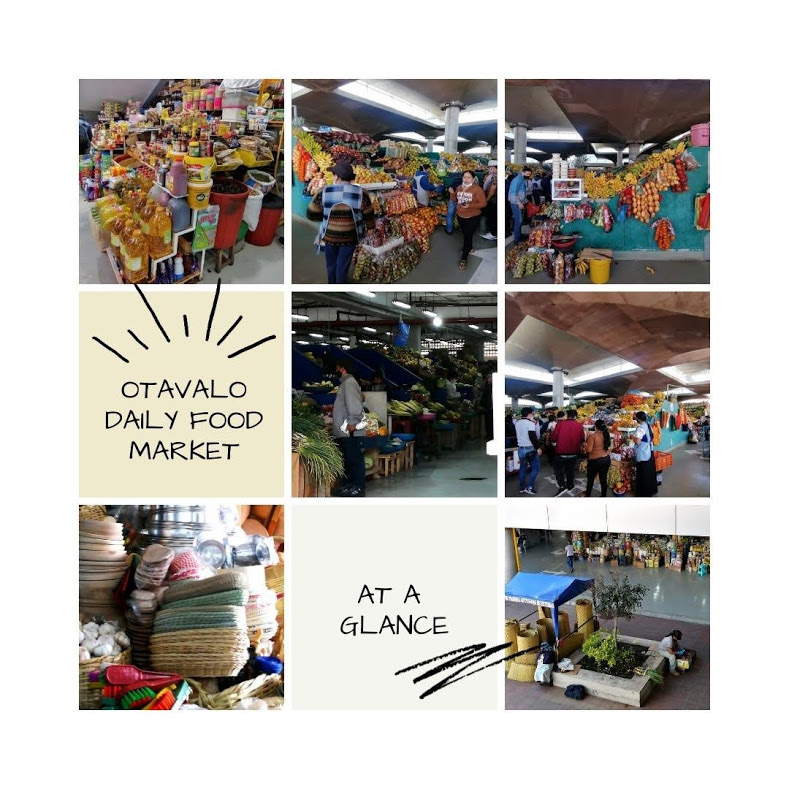
- Near the bus terminal there’s a market for smaller animals, like guinea pigs, rabbits, chickens, ducks & others.
- While outside of town, in Quinchuqui (3 kilometers, $4 taxi ride, 10 minutes) you’ll find the market for bigger animals, like pigs, sheep, cows & mules.
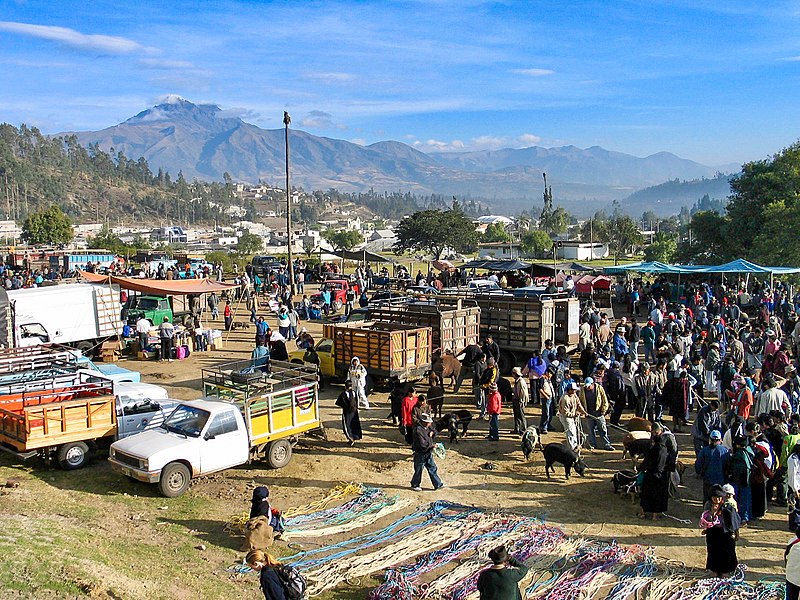
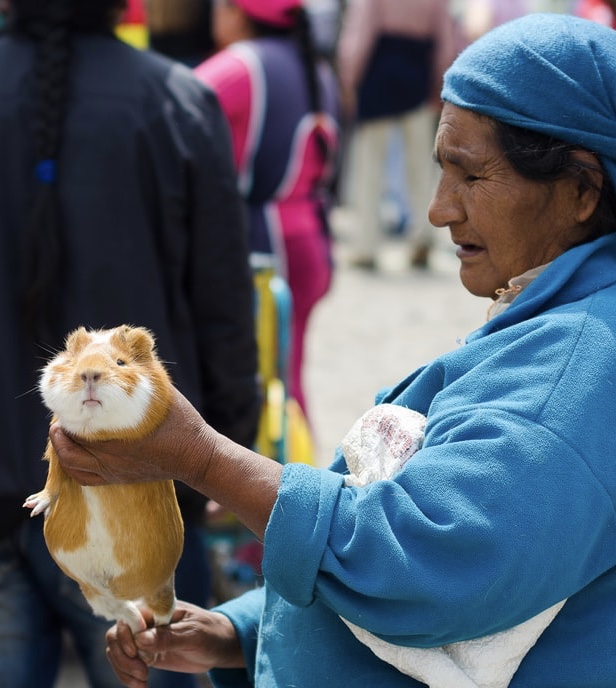
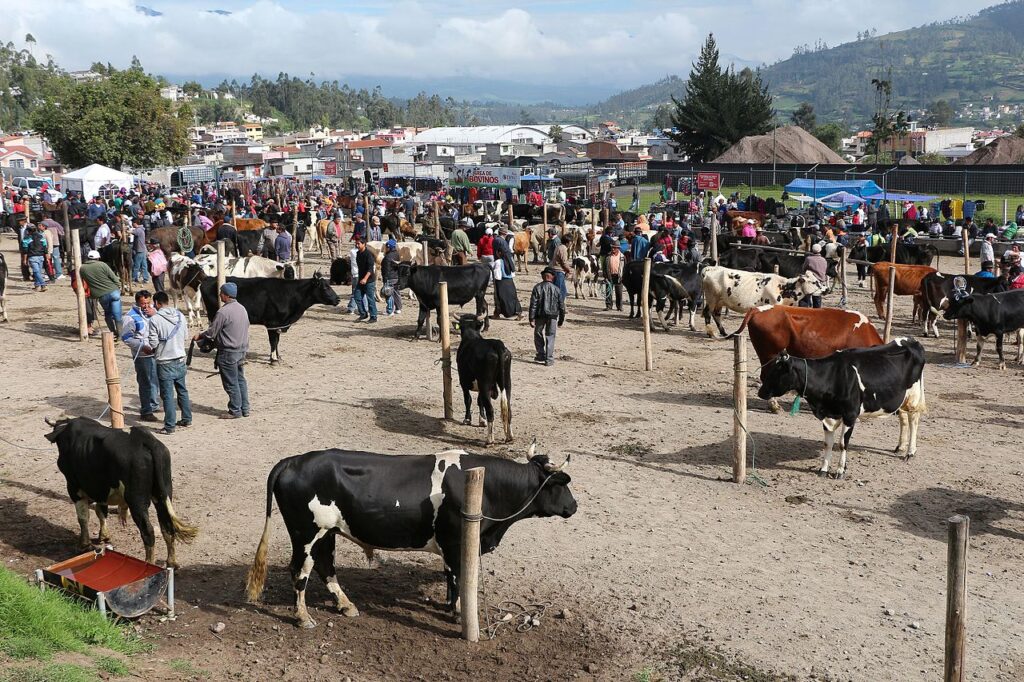
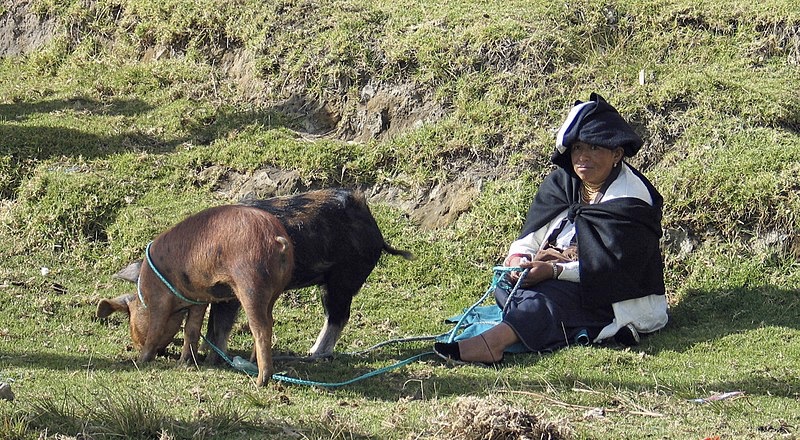
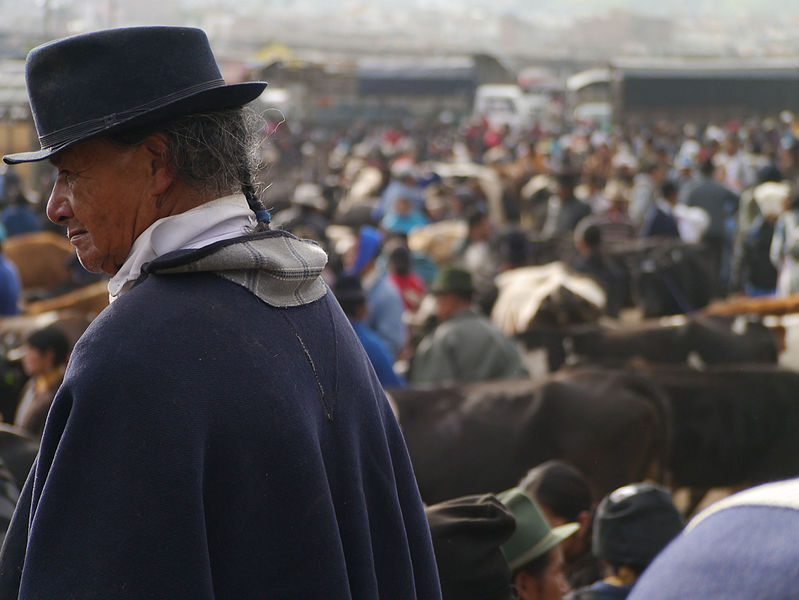
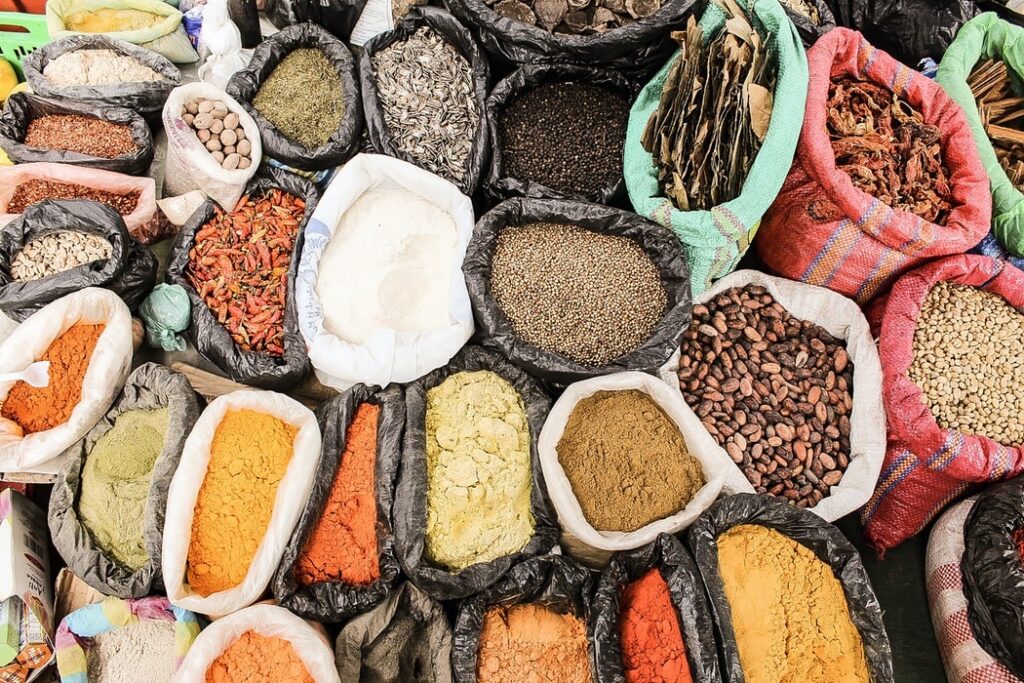
Most travellers are focused on the Tourist market to buy gifts & souvenirs. Open all day. The others markets though are worth a visit too. More so, if you’re interested in the local history, people & culture.
The Tourist market & Food market open daily, from dawn to dusk. The animal markets are organized only on the traditional Saturday. Both start when the sun comes up & close up early as well (before noon).
The Tourist market
As stated before, the Tourist market on Saturday attracts most visitors. Foreigners & local people. A market offering all kinds of colorful handicrafts. From mass products to exclusive handmade artwork.
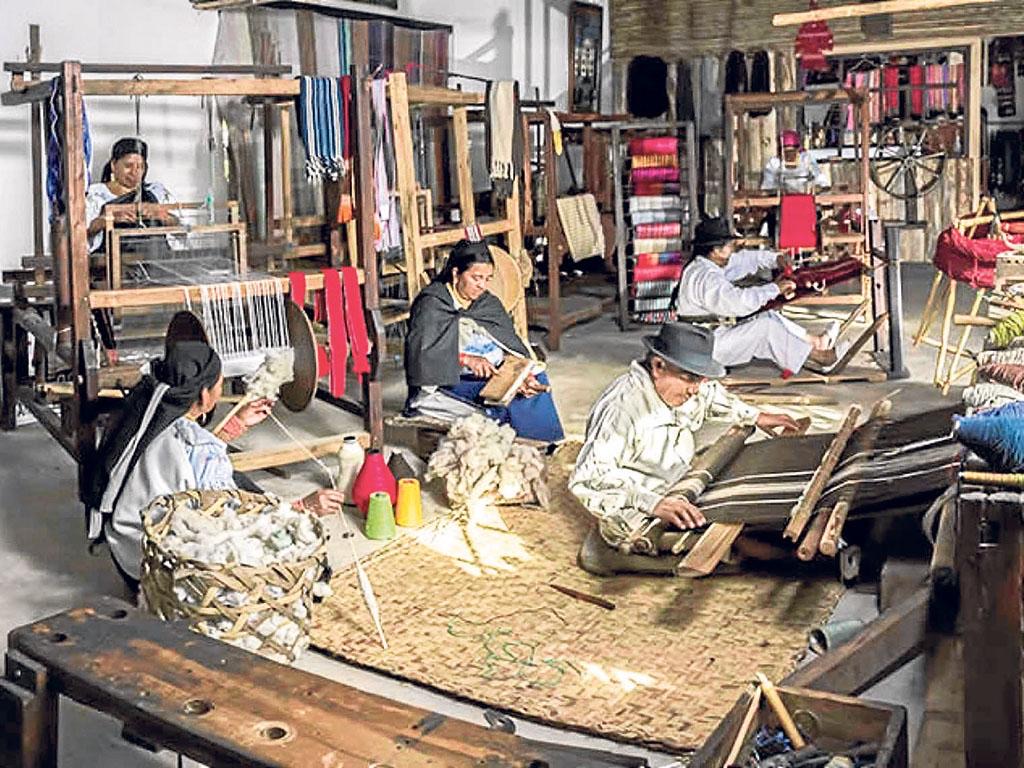
There’s something for everyone’s taste & at the best prices. So, besides buying something for yourself, many visitors gather all kinds of souvenirs for their family & friends on the Otavalo market.
Original Otavalo products
While enjoying the shopping spree, it’s good to know you’re part of a long history. To be conscious that the process of selling, buying & haggling in the city center of Otavalo is going on for ages. And also, that between the many handicrafts for tourists, there are still many original products for sale. Handicrafts with their own long history.
Textiles
The main traditional products were made of wool & cotton. Textiles like ponchos & blankets that protected the buyers against the cold Andean nights
- Note: During colonial times, the Otavalo ponchos were not only well known in in Ecuador itself, but also in other Andean countries. Like Colombia, Peru & Bolivia.
Besides the famous Otavalo handmade ponchos & blankets, the Otavalos in time also learned how to weave colorful cloaks, shawls & belts.
All products you can still find on the market today. Of different kind of qualities. Many are fabricated on machines nowadays, others though are still handmade. Even the thick, heavy & indestructible ponchos.
- Note: If you don’t find them on the market, you can visit certain workshops in the area around Otavalo.
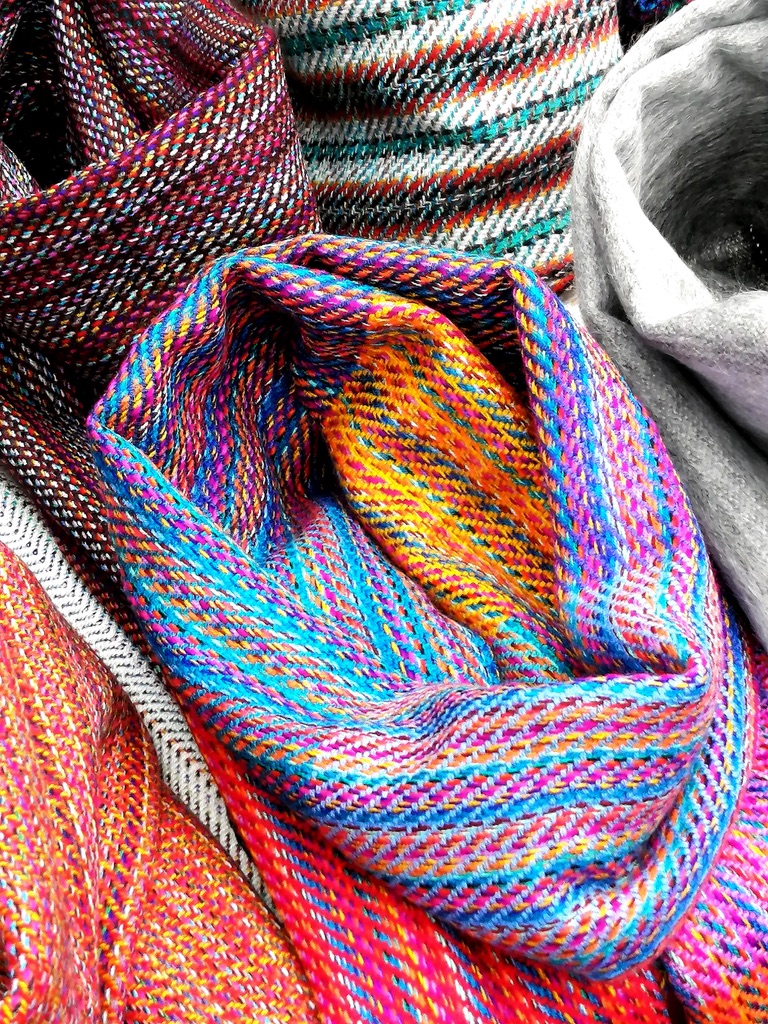
Embroidery & Jewelry
As many indigenous people still wear the traditional costume, you’ll find these for sale throughout Otavalo. Not only on the market, but also in many shops.
Principally the traditional clothes the indigenous women wear. Like the beautifully embroidered blouses. Or the typical jewelry, like rings & the famous necklaces (red coral & gold).
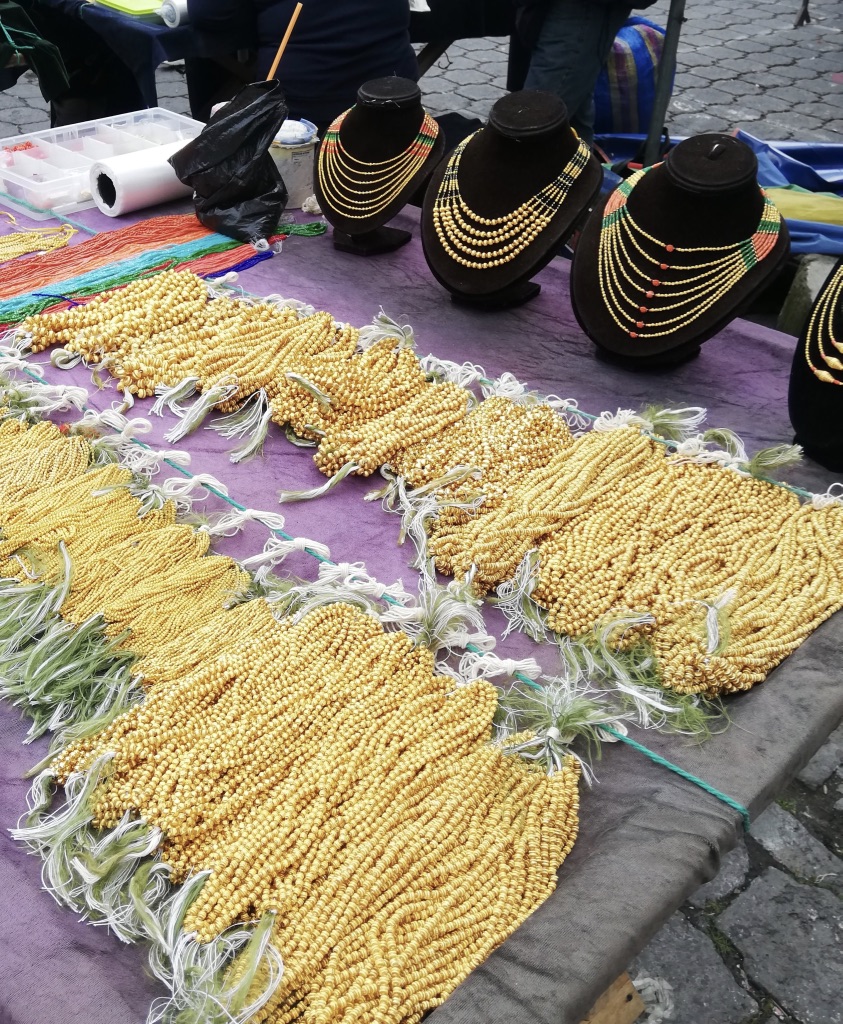
Utensils
Besides textiles, Otavalo was & is famous for the production of sleeping mats & other products made from Totora. A enormous plant that grows near the shore of the nearby lake of San Pablo.
- Wikipedia: Totora is a subspecies of the giant bulrush sedge. It is found in South America, notably on Lake Titicaca, the middle coast of Peru & on Easter Island. This plant can reach a height of 6 m (20 ft) and commonly reaches 4 m (13 ft). The word Totora comes from the Quechua language.
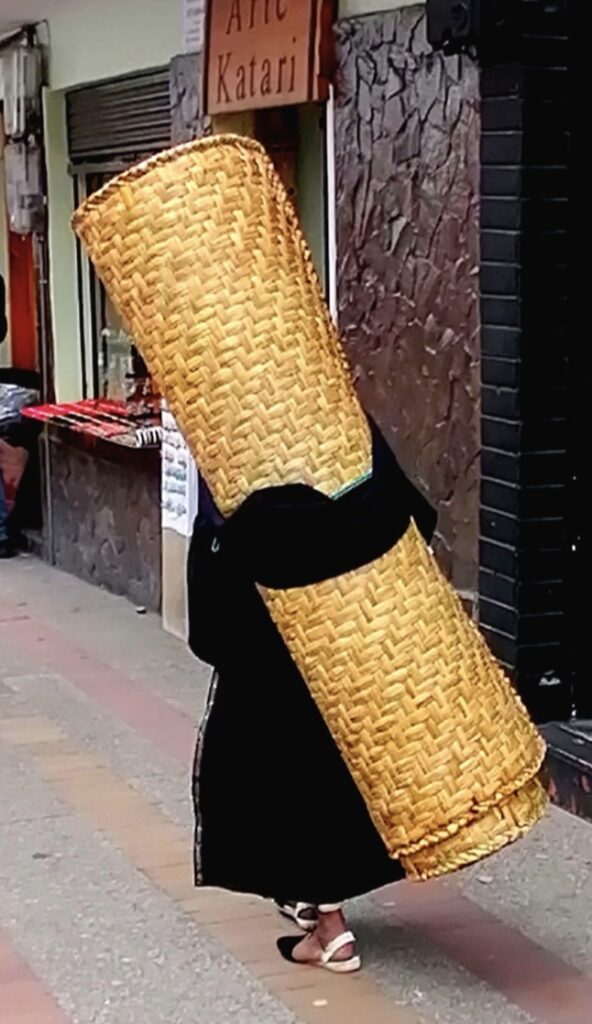
Other well-known local products are hats, baskets, wooden spoons & pottery. As well as rope & bags made out of the fiber of the cactus. All products that were produced in larger quantities in earlier times, but are still for sale here & there. Look out for them on your visit to the Otavalo market.
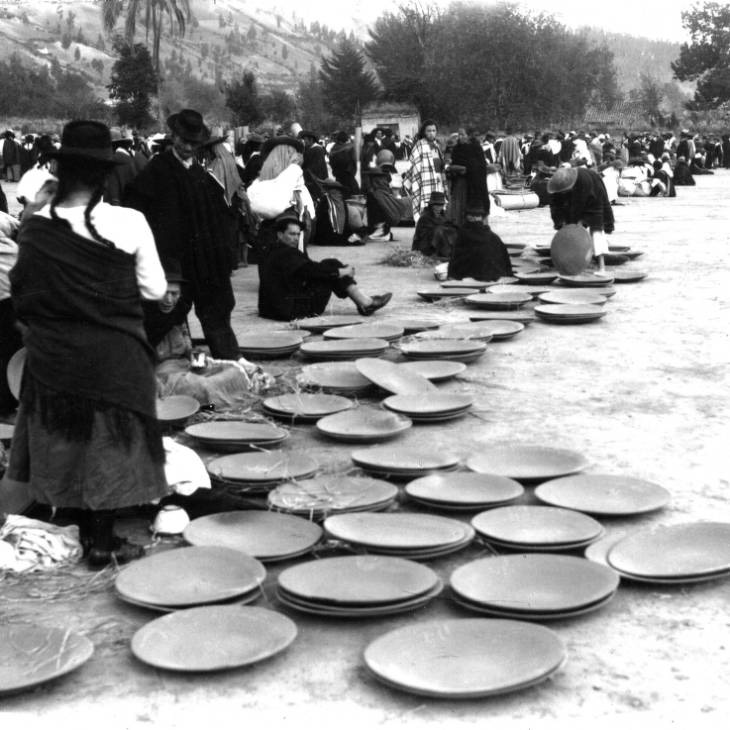
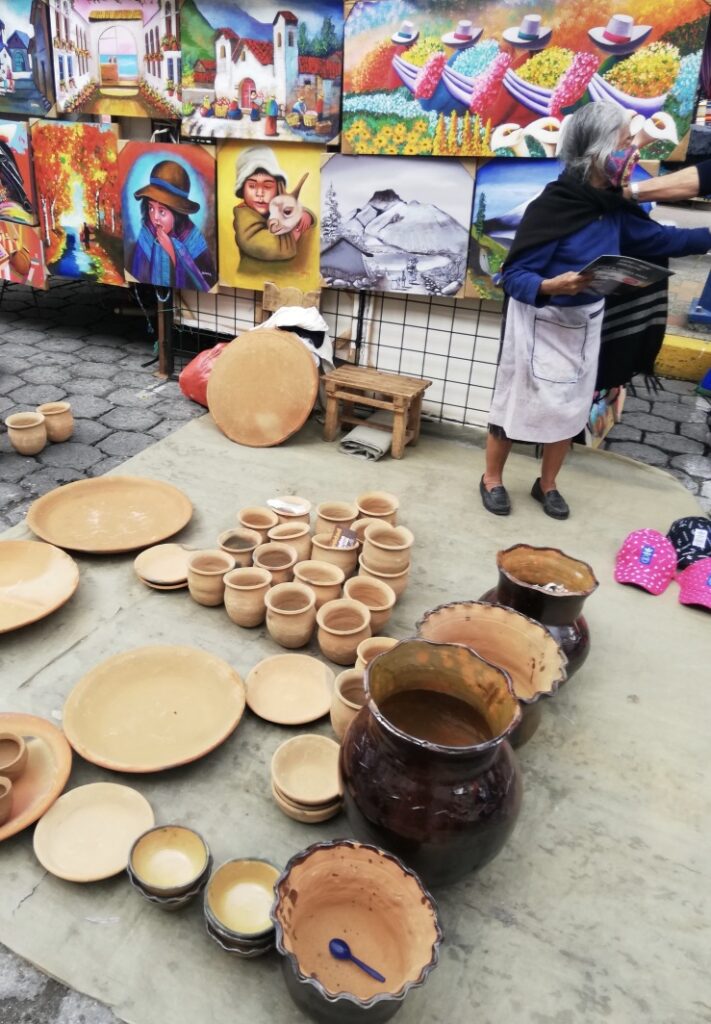
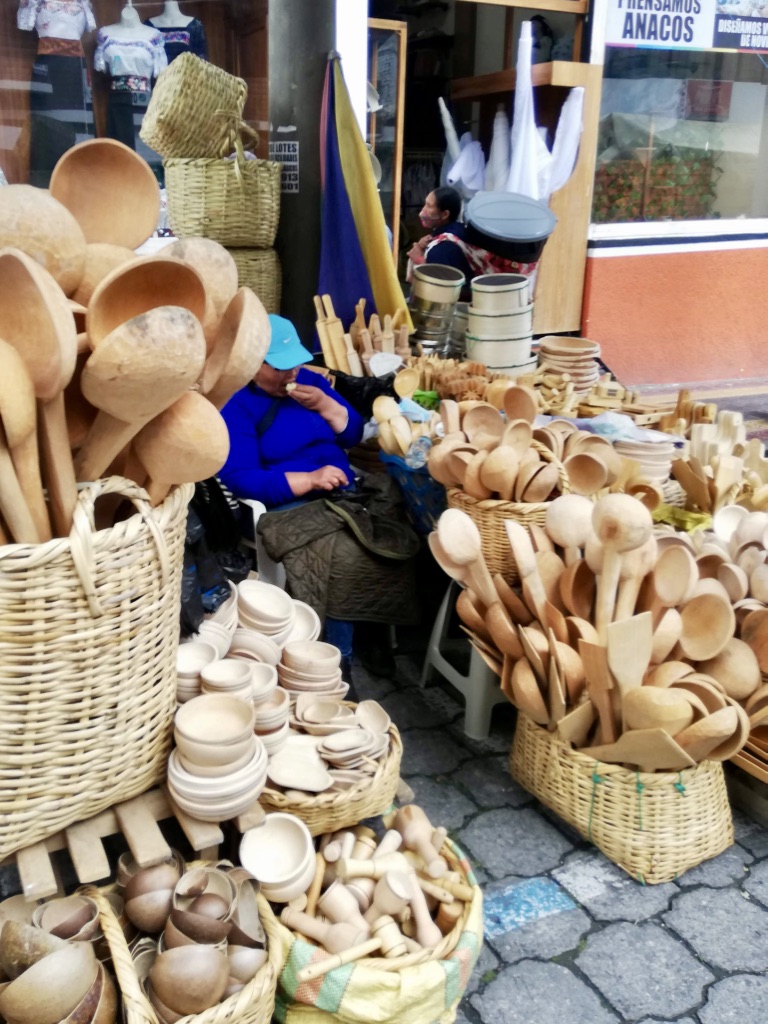
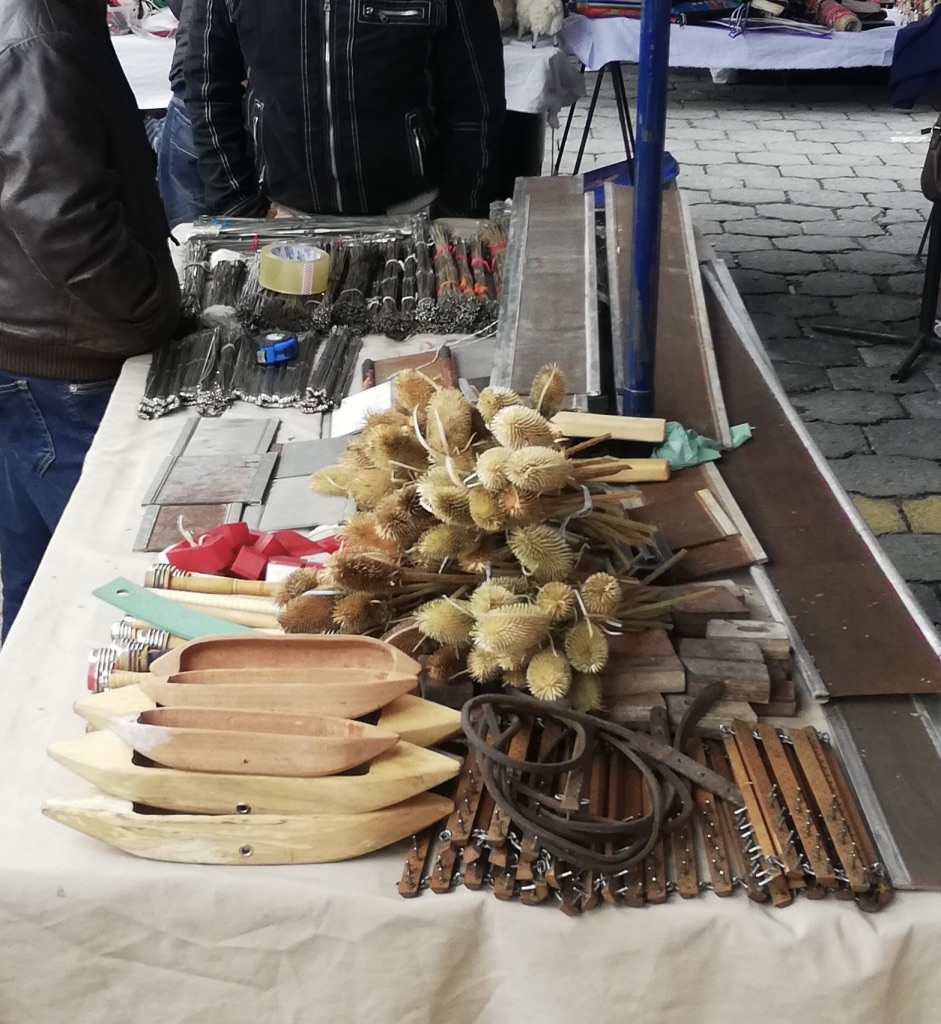
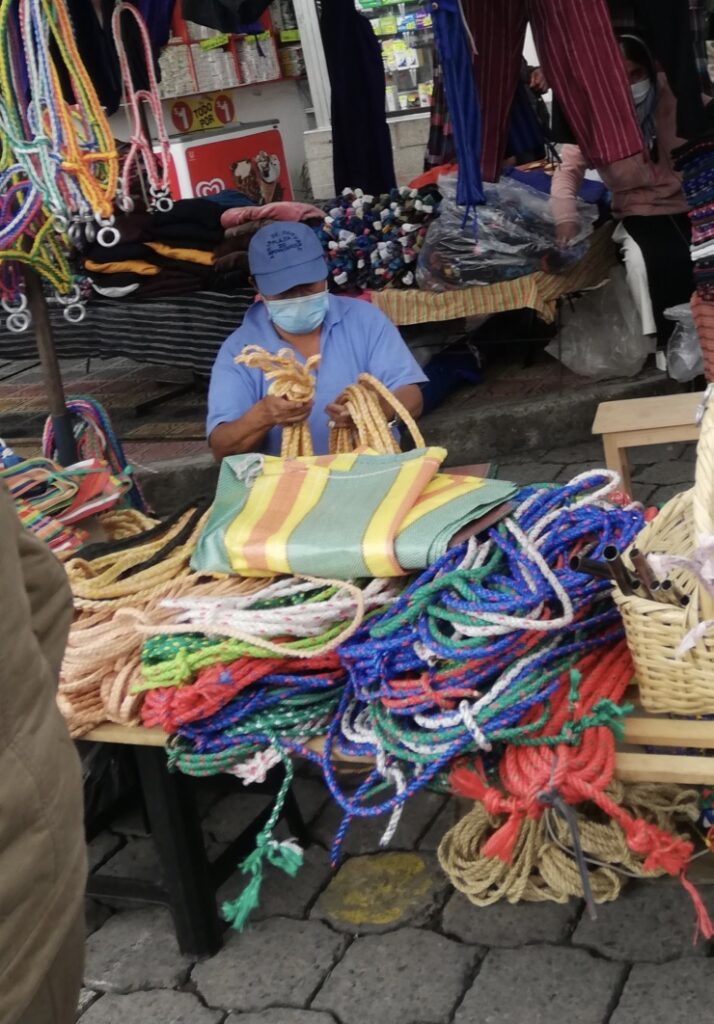
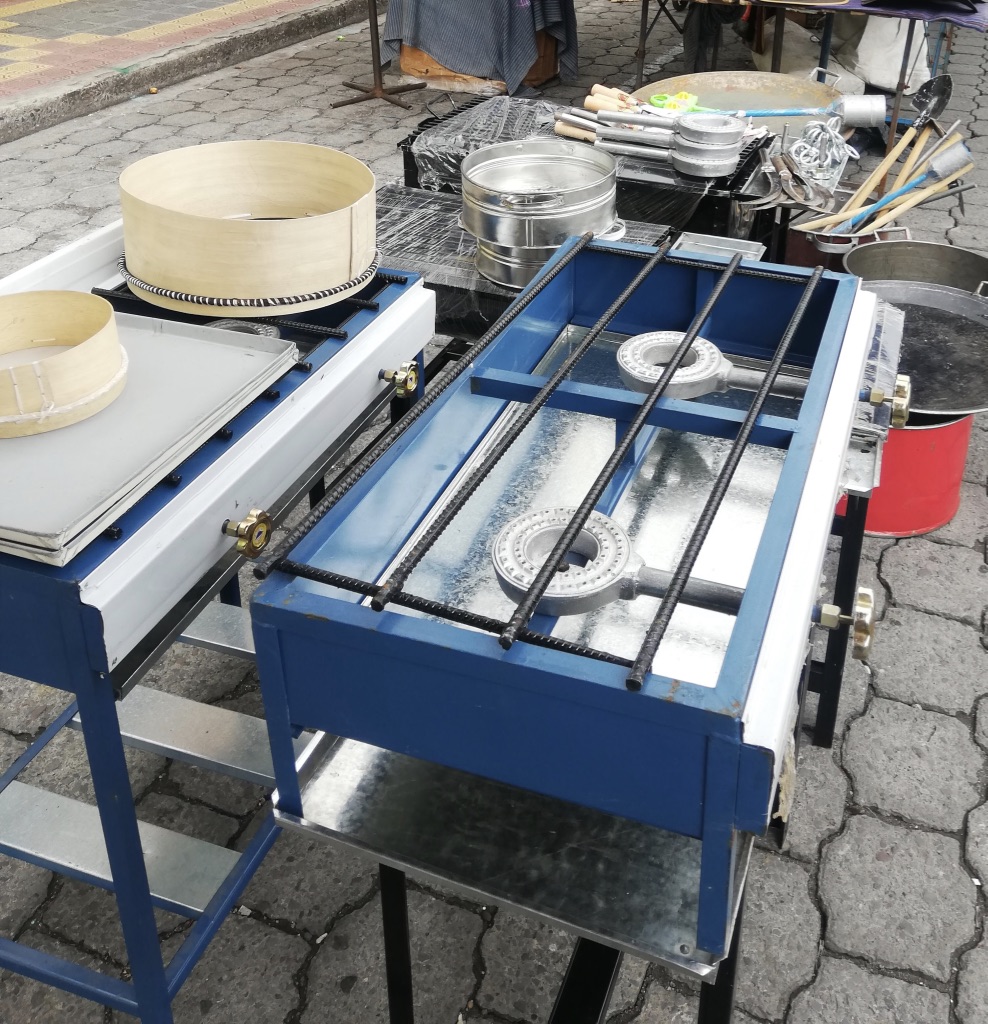
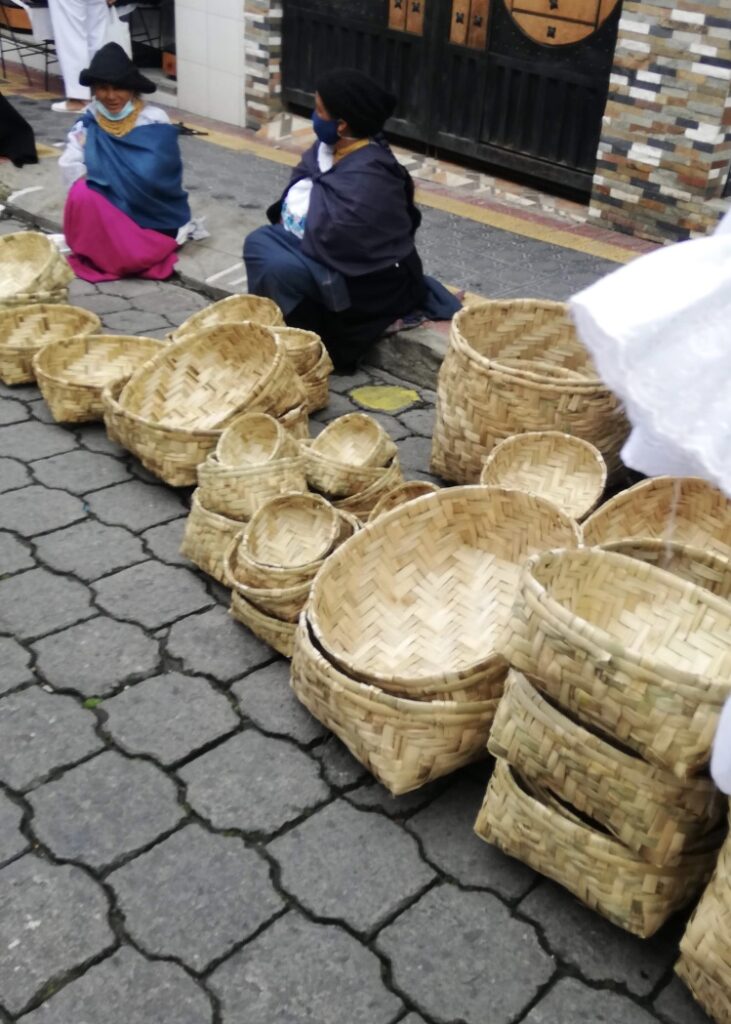
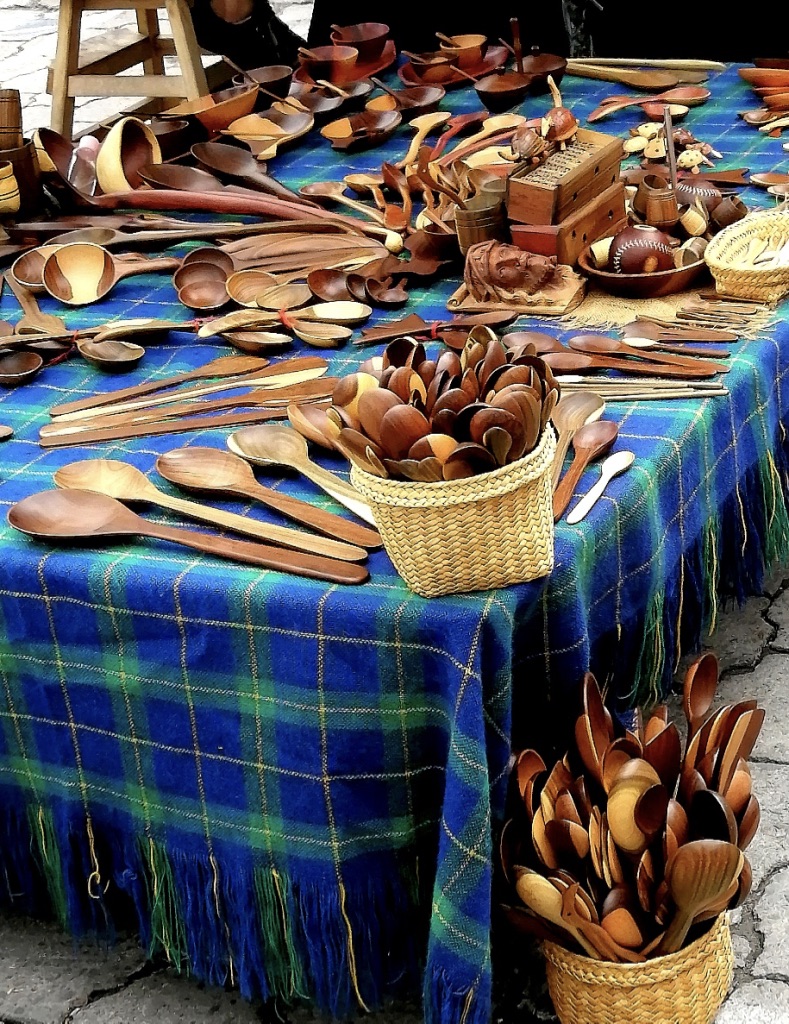
General info, tips & recommendations for your visit to the Otavalo market
- In the past, the indigenous Saturday market started at sunrise and ended early, around 8 am. Nowadays, the market still starts early, but the Tourist market lasts all day. Not only on Saturdays, but also on weekdays.
- More important than actually buying something is to negotiate a price. A necessary but friendly game really. For you and for the seller.
- Generally prices are more flexible in the afternoon. So, if you’ve seen something nice in the morning but didn’t reach a deal, go back in the afternoon and try again.

- If you buy several items, you can even negotiate a better price. More so if you buy certain items by the dozen (“una docena”).
- If you visit the Otavalo market on Saturday, don’t limit yourself to looking for handicrafts on the Plaza de Ponchos and in de Calle Sucre. Take a side road so now & then. Like de Calle Modesto Jaramillo where, besides beautiful handicrafts, you still find authentic products.
- If you want to visit the animal markets (only Saturdays), you’ll better visit them early. After visiting them, there’s still time enough to visit the main Otavalo Tourist market.
- Mostly it’s sunny, but expect any kind of weather during the day. The sun is very strong. Always protect yourself (at least Factor 50), even when the sun isn’t shining. Afternoons can get chilly, evening are always a bit cold.
- As in any busy place, watch your belongings. More so on Saturdays, when pickpockets are active on the market.
What else to do in the area, besides the Otavalo market
It’s easy to combine a visit to the Otavalo market with other attractions in the neighbourhood. Like the Peguche Waterfall or Parque Condor, which you can easily visit in half a day.
Or visit unique natural parks on a day trip. Like a hike around the Cuicocha Crater lake. Or the Mojanda lake area, where you can climb to the top of the Fuya Fuya volcano.
- Note: Click on the names on the mentioned attractions for Tips & Impressions. For a complete list of the main attractions around Otavalo, go to Things to do in & around Otavalo.
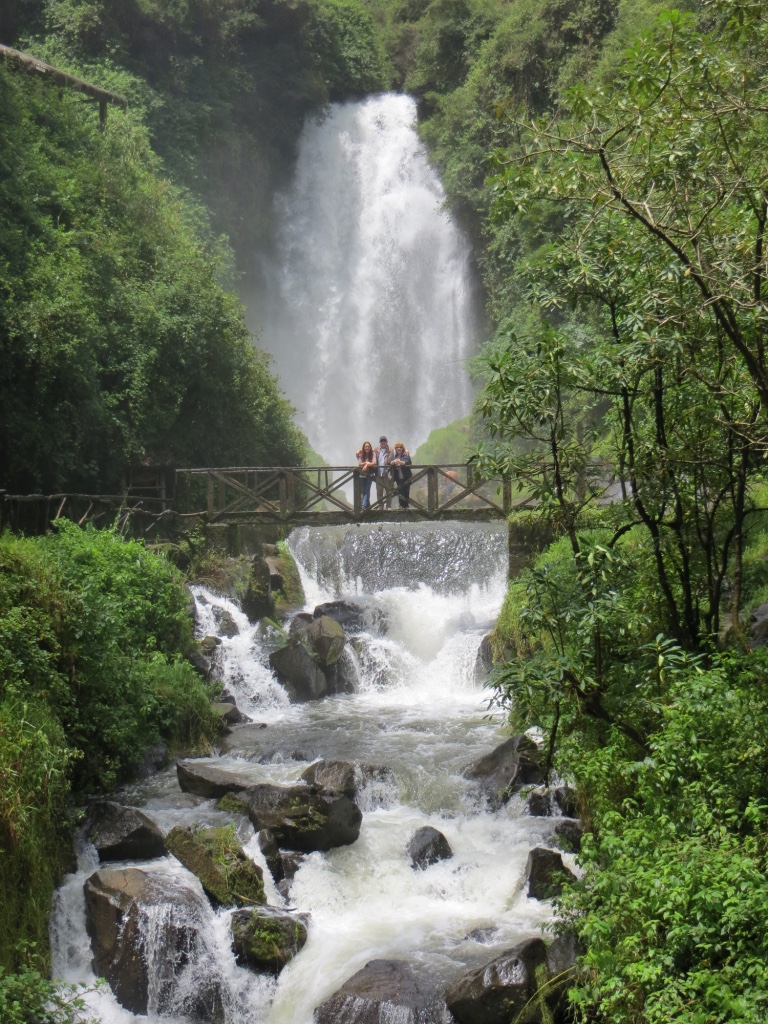
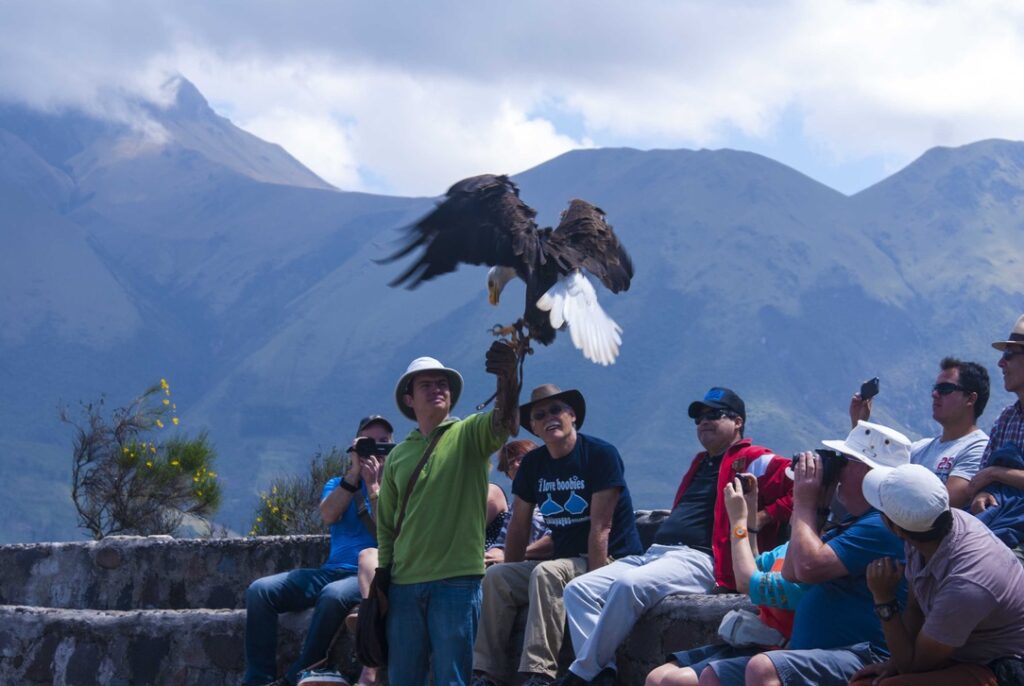
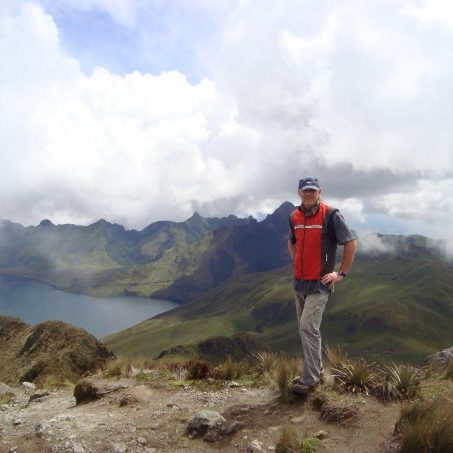
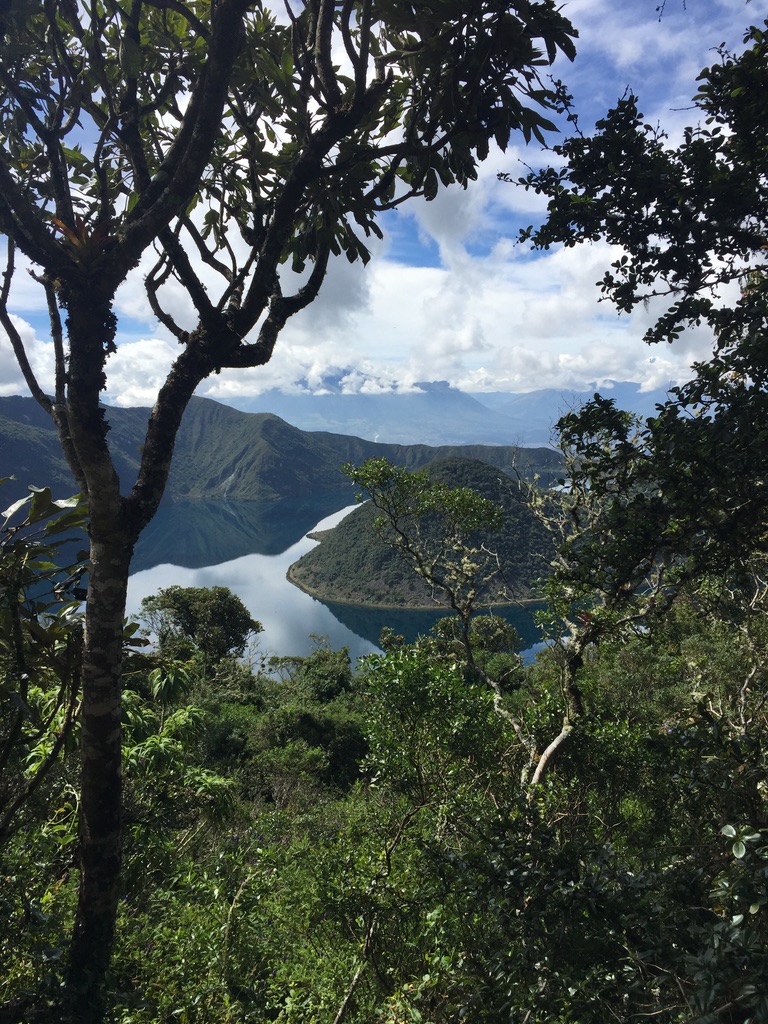
Walk in History
I hope after you’ve read this post about the long history of Otavalo market your visit will be an altogether different experience then it normally would be. Conscious of being part of a long history. A market that’s going on for centuries. Still the main occupation & income for many local indigenous families & others.
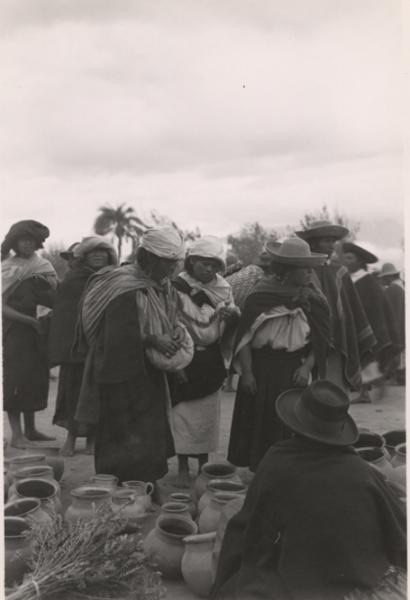
Was, is & will be. Because the Otavalo market will go on & on. Forever. Meaning your welcome visit to the Otavalo market is only a moment in time. Honorable to have been there & been part of & witnessed it.
Maybe in a few centuries the Otavalo market can expect a first visit from Outer Space? Just kidding, … Although, you never know. Wouldn’t be a surprise though if the Otavalos head out to the stars first. It’s in their DNA.
A perfect hotel when you visit Otavalo
If you choose to stay in Otavalo, I highly recommend the Hotel Doña Esther. A perfect base to visit the Otavalo market & the area around.
A cozy, quiet, small but personal place, located in the center of Otavalo. Just a few blocks away from the main market squares.
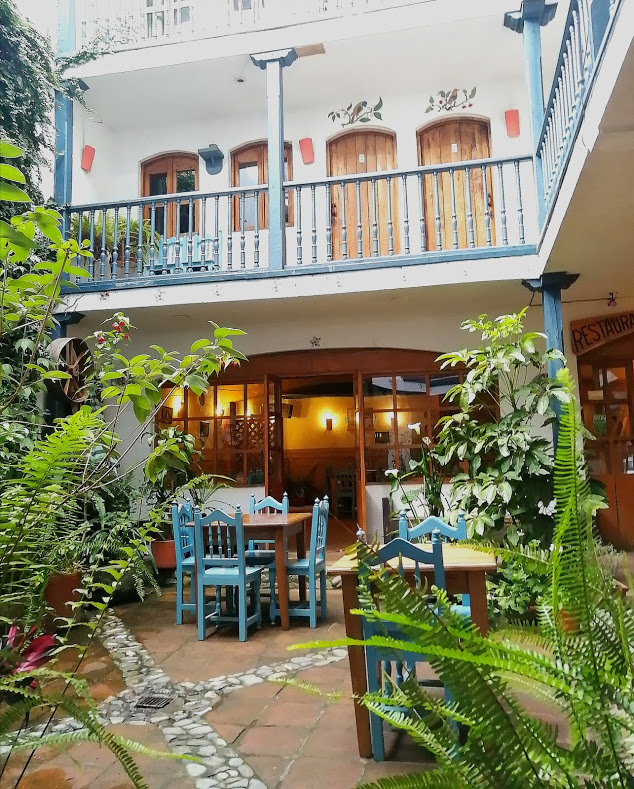
Besides a unique hotel with it houses the best restaurant in town. Restaurante Árbol de Montalvo offers a unique menu. Fusing Ecuadorian flavors with European ones.
Cotacachi: An alternative to stay
As you would guess, there are – besides Hotel Doña Esther – many other options to stay overnight during your visit to Otavalo. Be it a Hotel, or an Airbnb. A choice you can make on your preferred Hotel website.
However, when it comes to an Airbnb I’d like to introduce you to our own, located in neighboring Cotacachi. A 20 minute busride away from Otavalo & its historical market.
A complete rental home we – that’s me & my wife Wendy – recently finished building. After owning & running the hotel in Otavalo mentioned above for over 22 years.
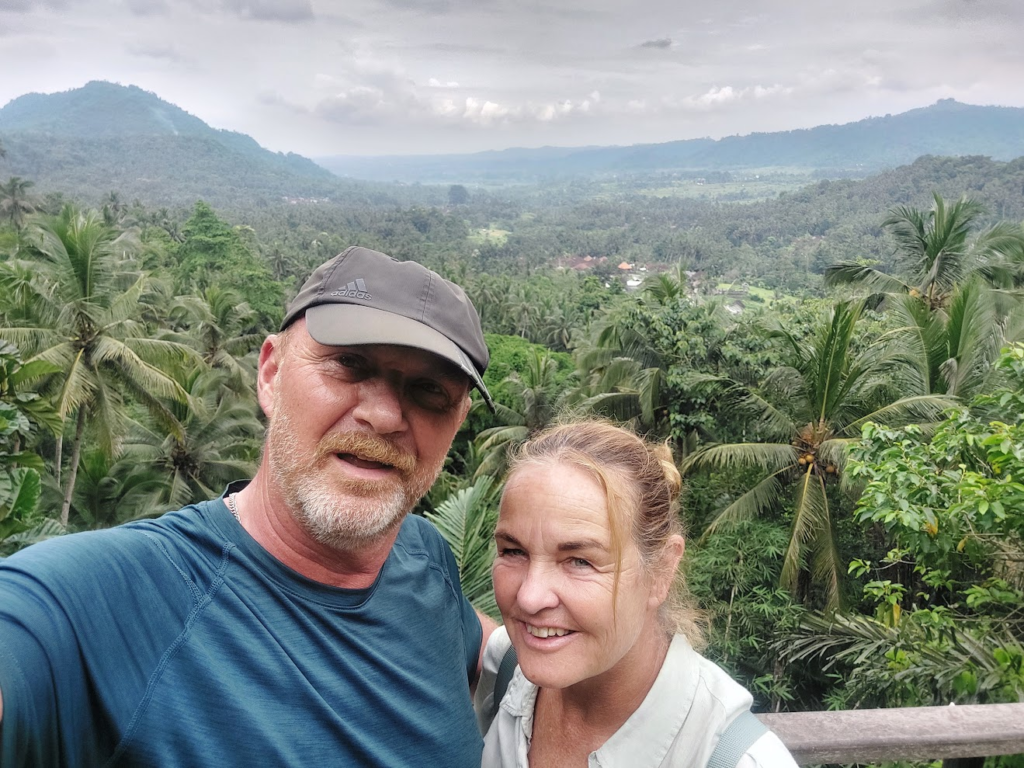
Casa Santa Ana
An Airbnb we named Casa Santa Ana. After the official name of our “Magical City”: Santa Ana de Cotacachi. As well as Wendy’s mother Anna.
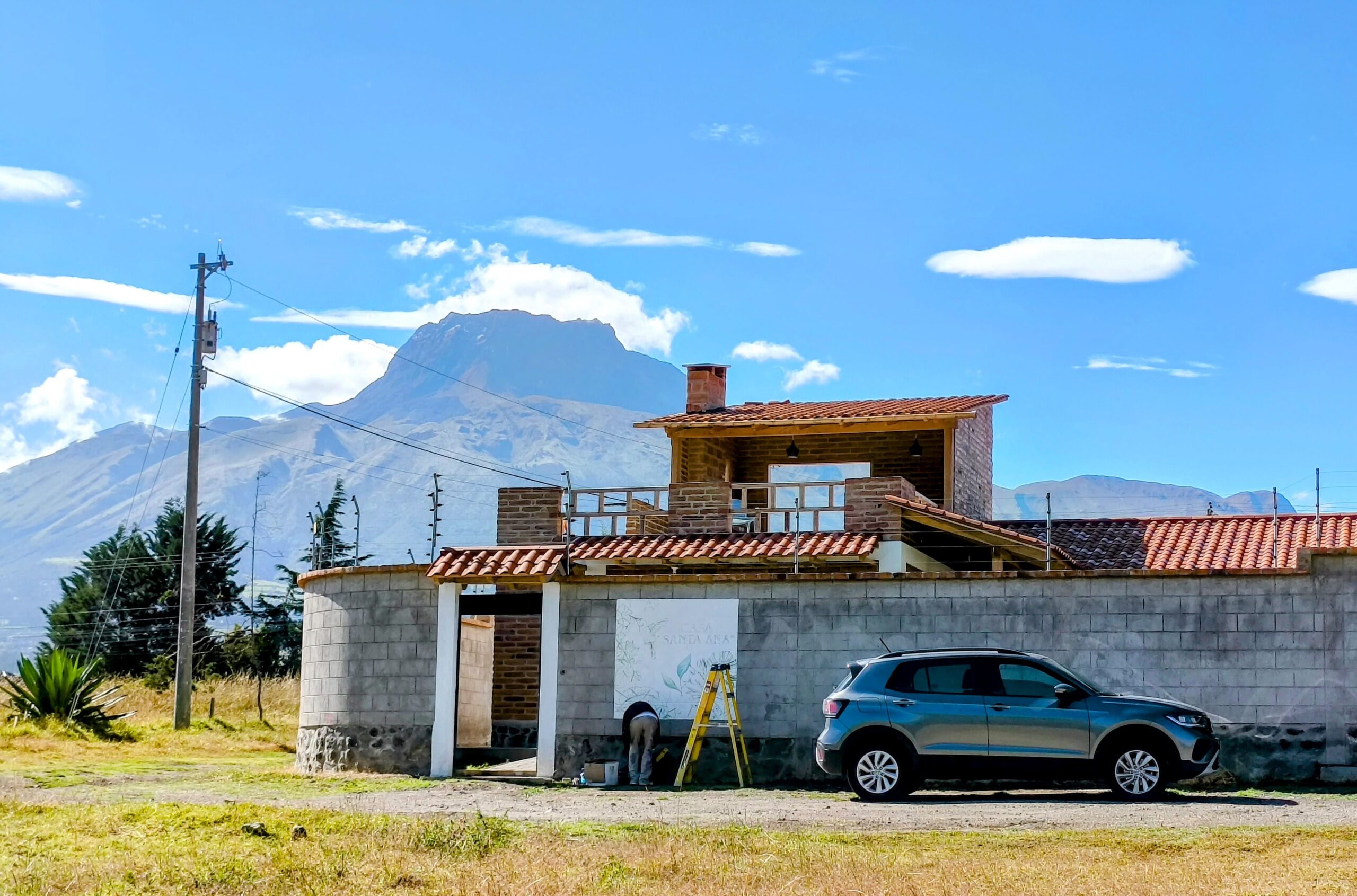
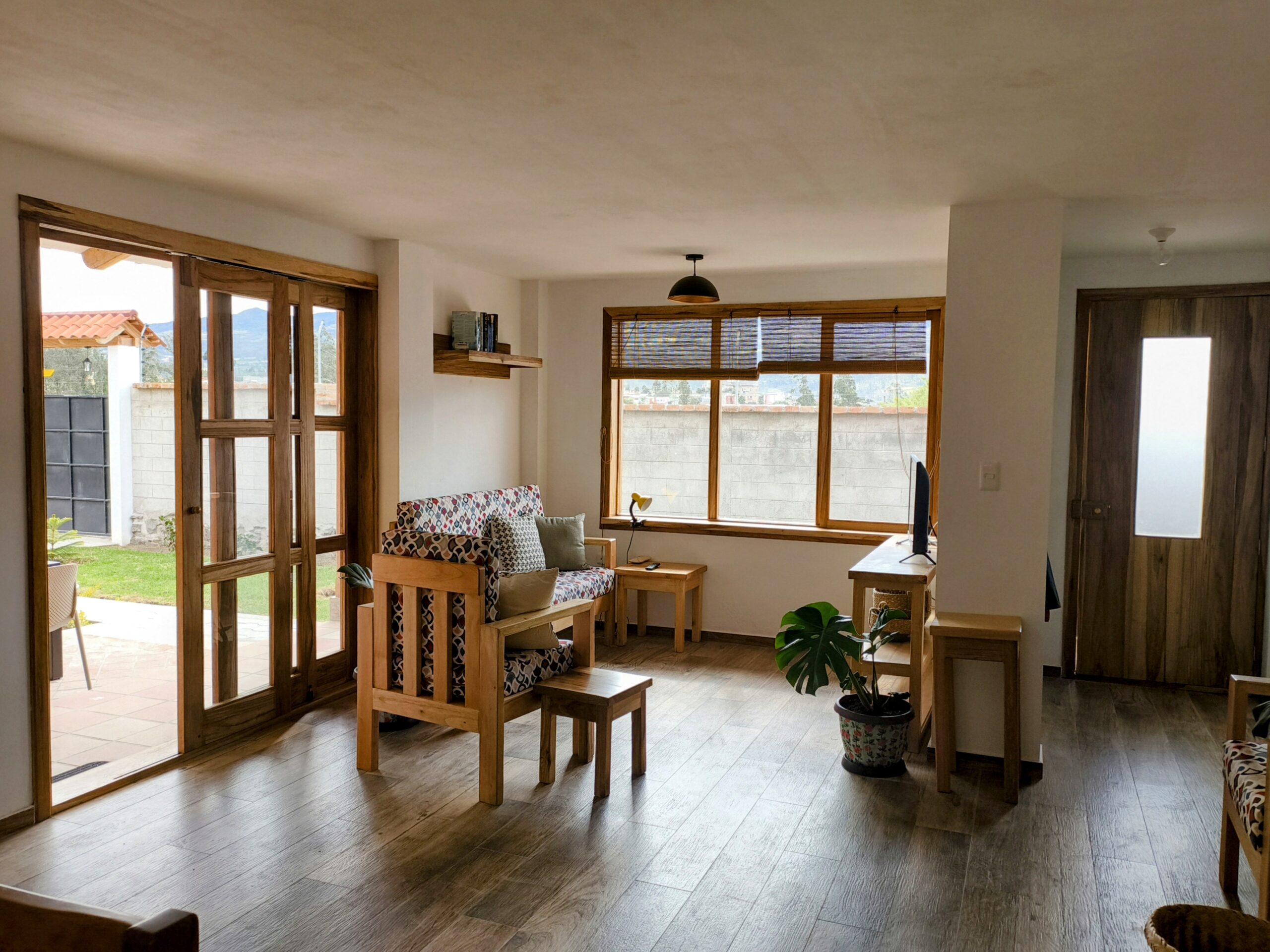
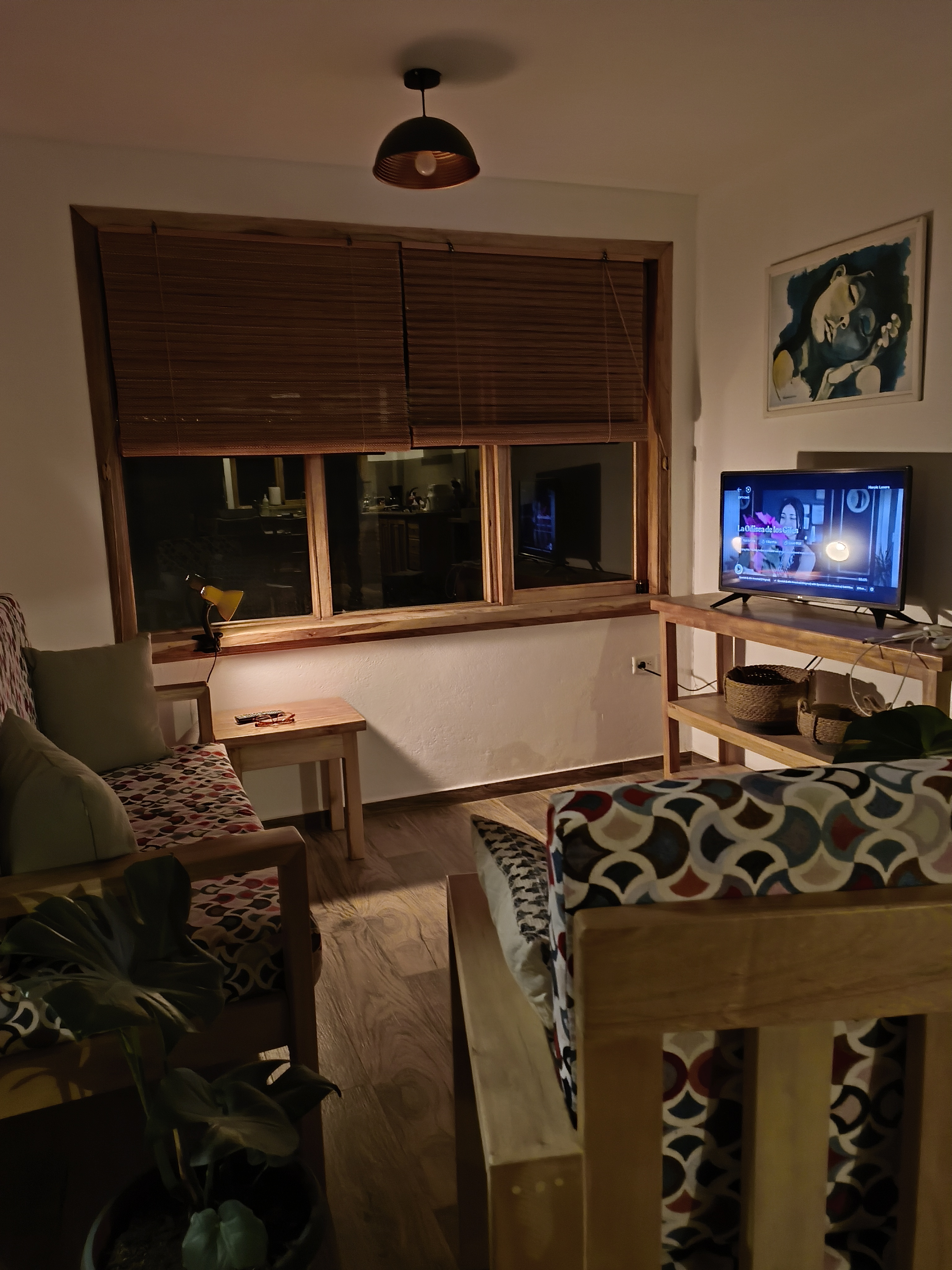
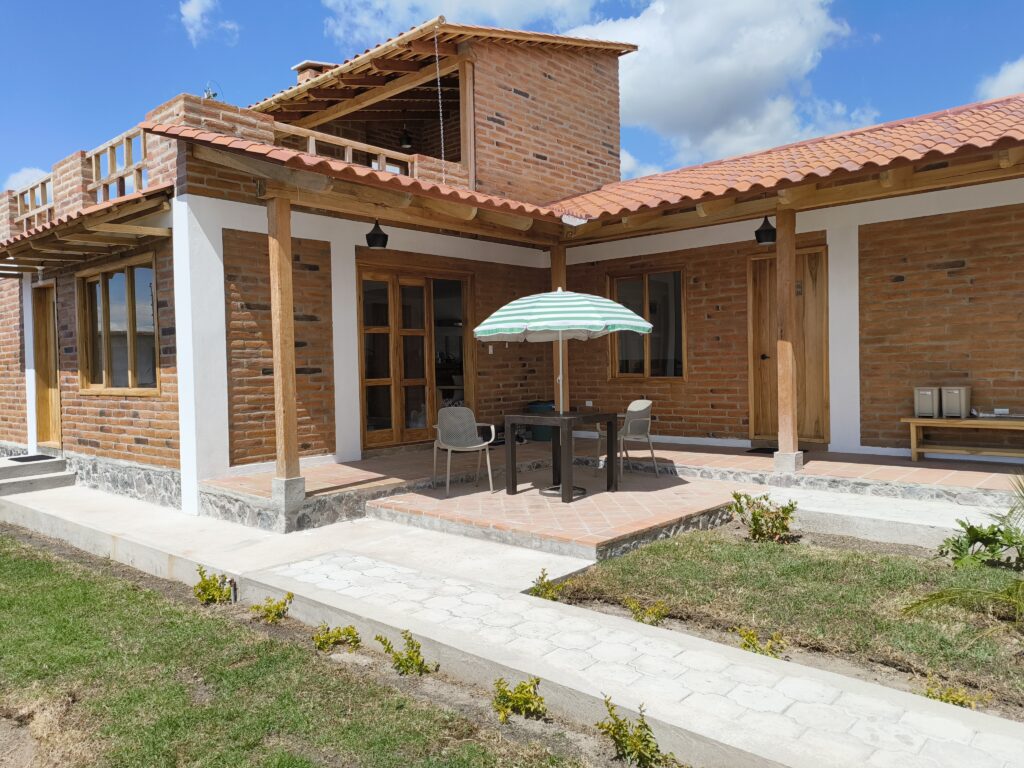
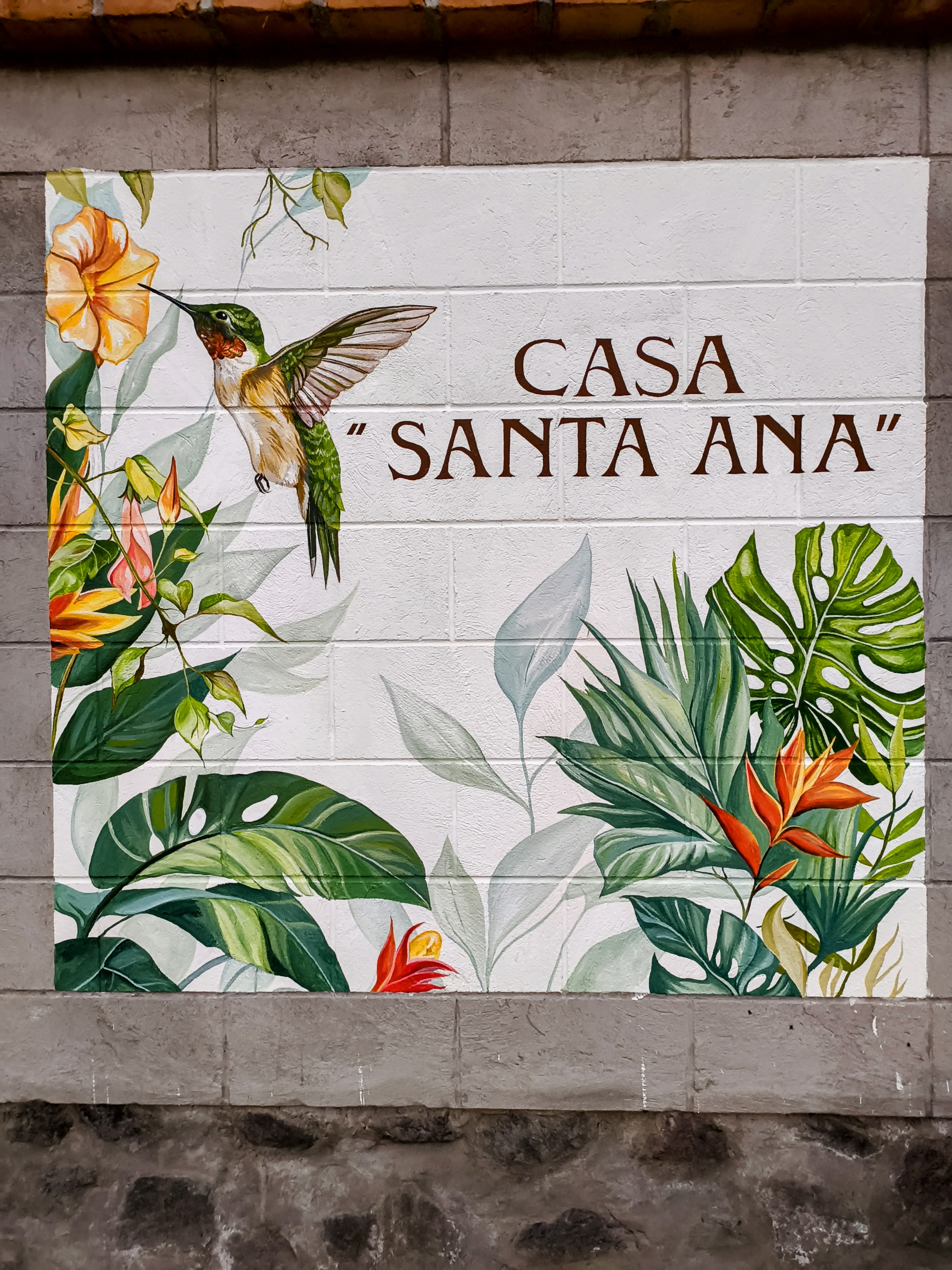
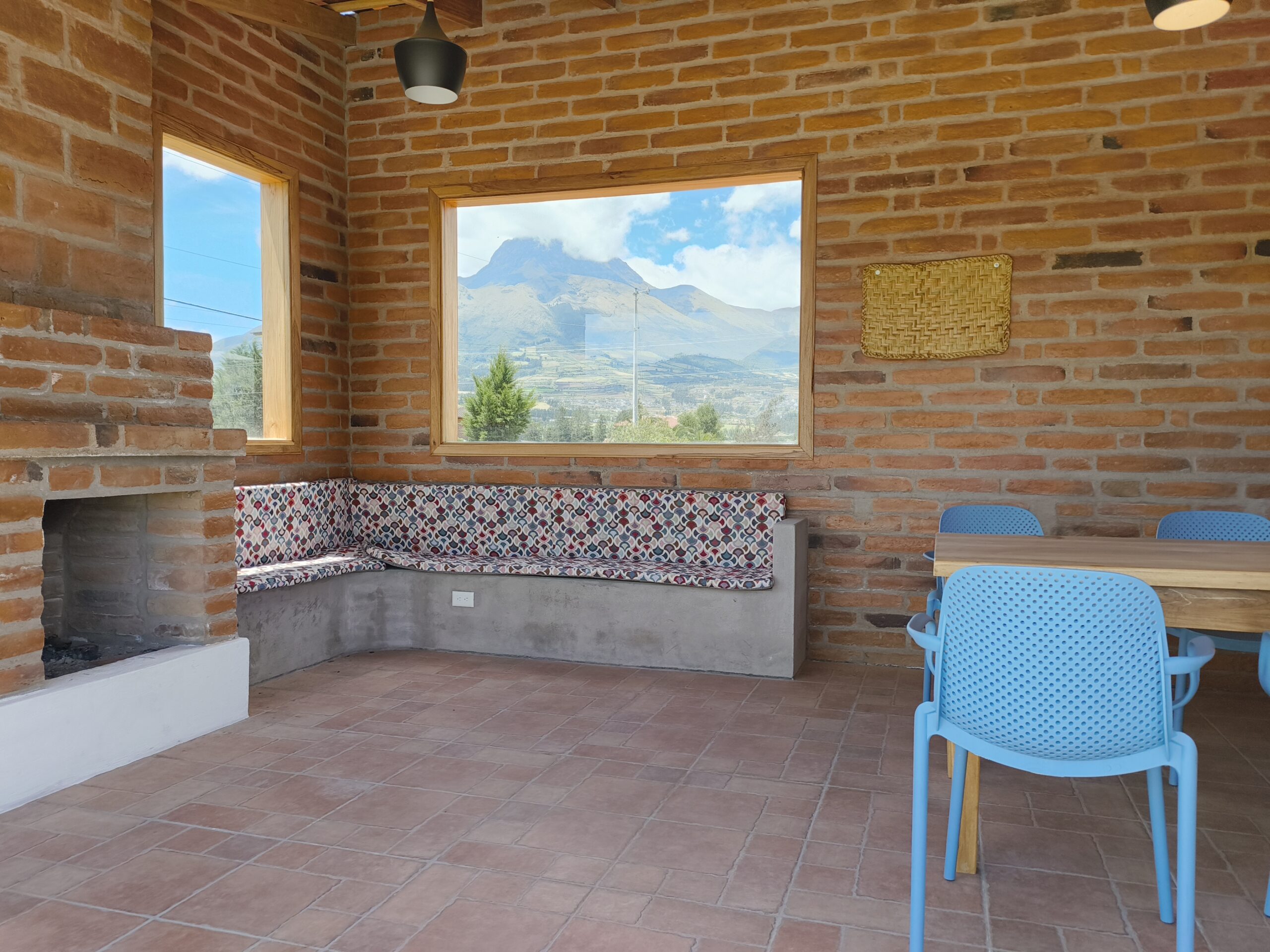
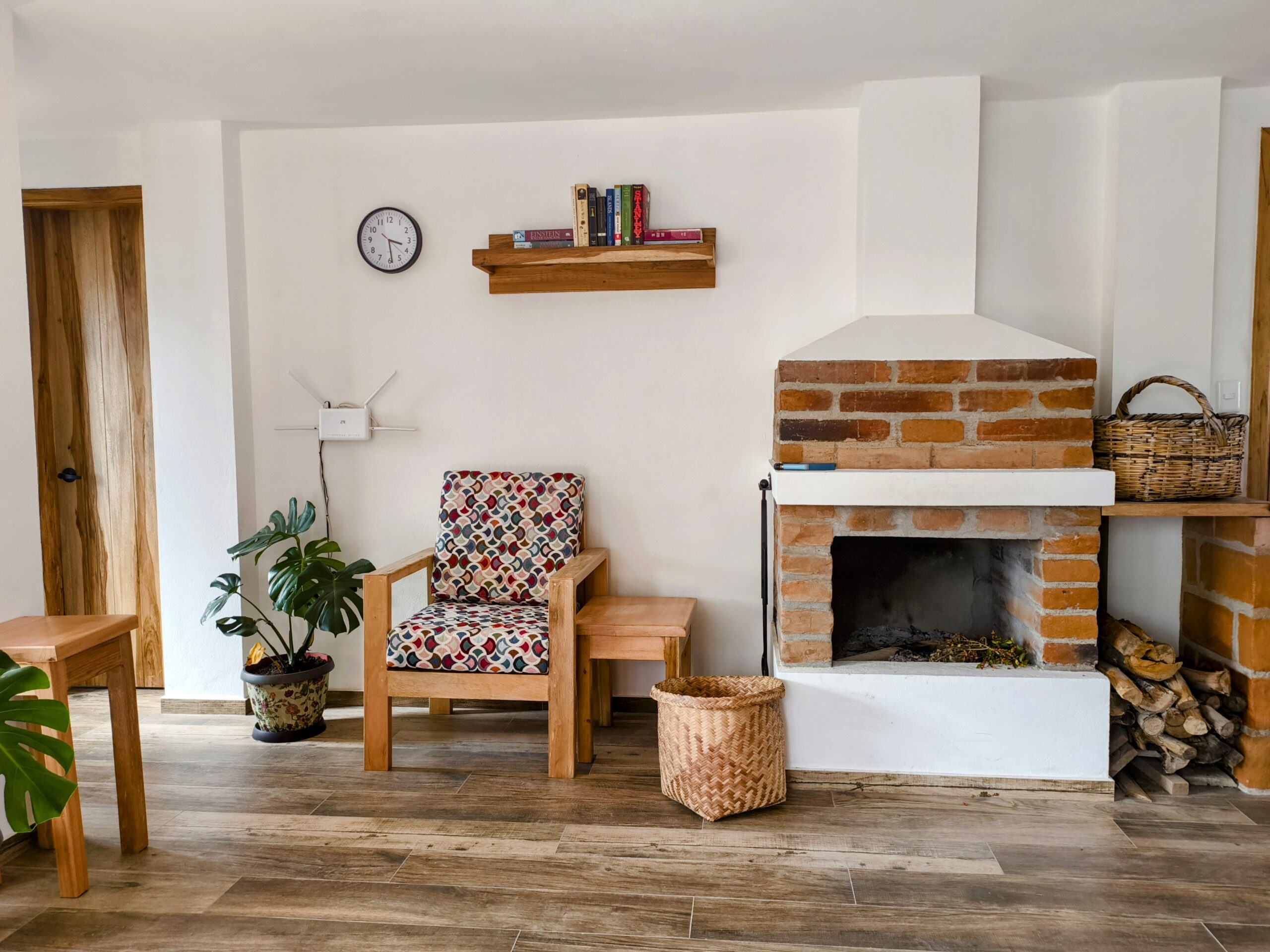
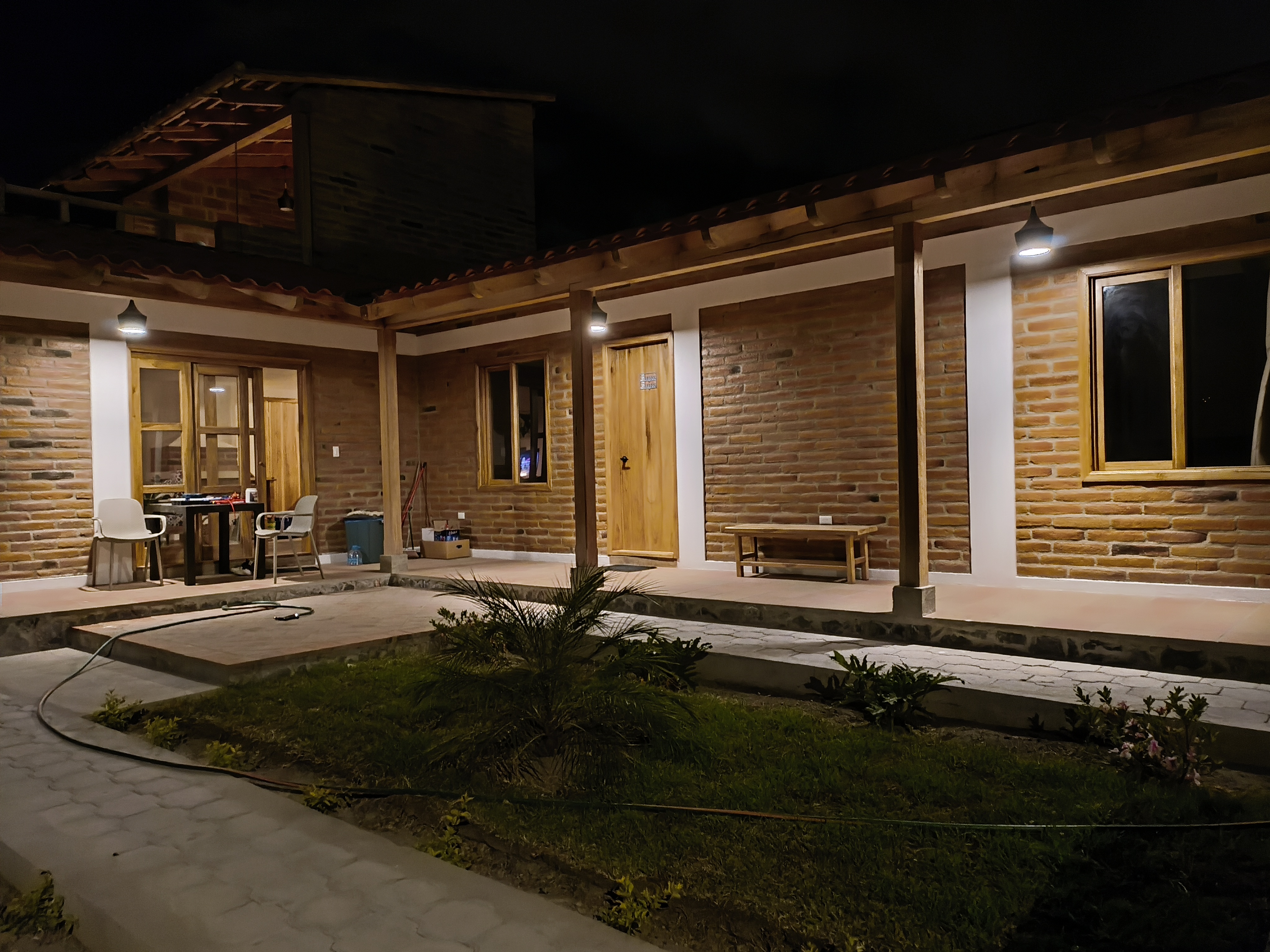
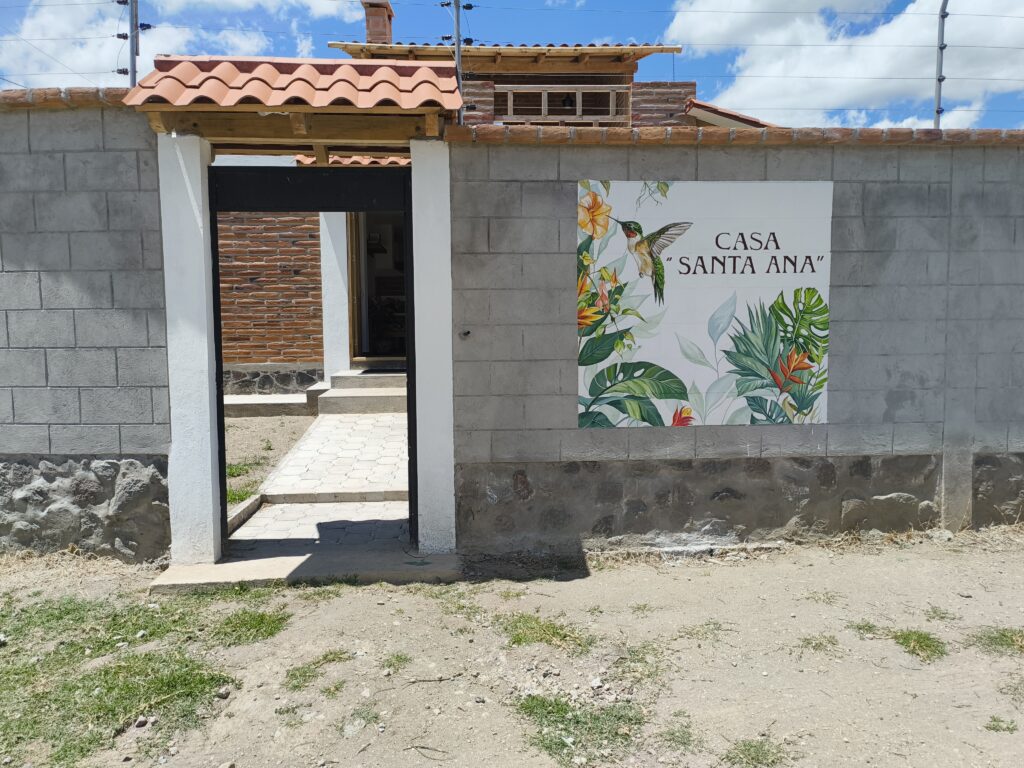
Besides a spacious living room with chimney & full equipped kitchen, our Airbnb has two separate bedrooms. Each with its own bathroom. Ideal for 1, 2 to 4 people. Or also a family with 2 or 3 smaller children.
- Minimum stay: 3 nights. Maximum stay: several months.
From the partially covered rooftop terrace – also with a chimney – you have magnificent views of the old city center & surrounding area. Like the mountain of the same name in the background.
- Mt. Cotacachi is the 11th highest volcano of Ecuador (4,944m/16,220ft).

Mt. Cotacachi is still covered in the clouds.
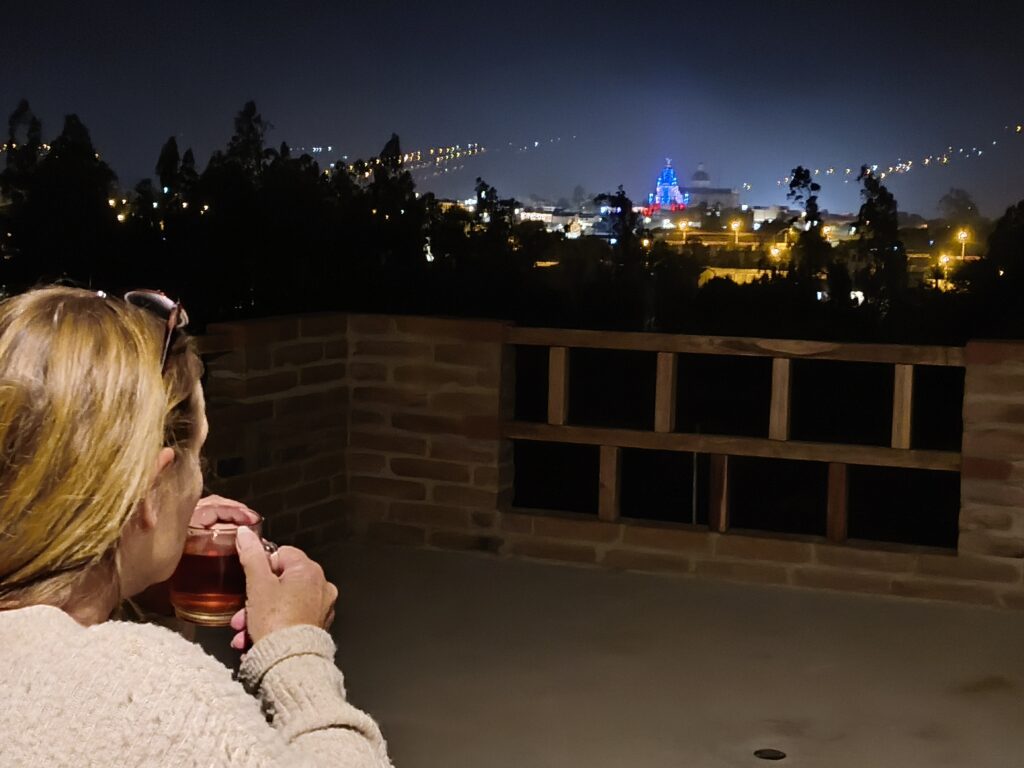
To learn more about this overnight option in Cotacachi, click on:
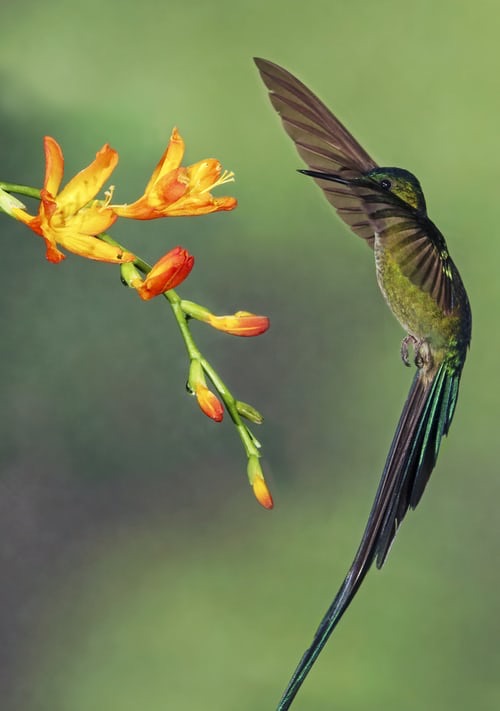
.
- For all the latest news on Ecuador, join my Visit Ecuador Facebook Group.
.
For an overview of all travel posts of my blog, go to: the Home Page.
- Final message, for fellow travel writers & bloggers: TravelPayOuts is a global integrated affiliate program focused exclusively on travel offers. If it works for me, it will probably work for you too: TravelPayOuts.


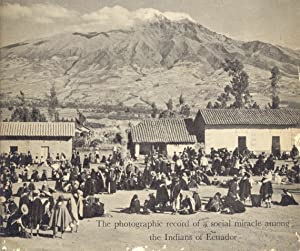
Comments
4 responses to “Visit the Historical & World famous Otavalo market in Ecuador”
[…] Visit the Historical & World famous Otavalo market in Ecuador […]
[…] Visit the Historical & World famous Otavalo market in Ecuador […]
Very nice,the history!
Thanks, Wendy!